
Category of Astronomical Heritage: tangible immovable
Mykolaiv (Nikolaev) Observatory, Ukraine

Format: IAU - Outstanding Astronomical Heritage
Description
Geographical position - InfoTheme: Astronomy from the Renaissance to the mid-twentieth century
Entity: 172
Subentity: 1
Version: 5
Status: PUB
Date: 2022-03-09 03:26:08
Author(s): Gudrun Wolfschmidt
Mykolaiv Astronomical Observatory, 1 Observatorna St., Mykolayiv, Ukraine
Mykolayiv or Mykolaiv (German: Mykolajiw or Nikolajew, English: Mykolaiv, Russian: Nikolaev or Nikolayev)
Location - InfoTheme: Astronomy from the Renaissance to the mid-twentieth century
Entity: 172
Subentity: 1
Version: 3
Status: PUB
Date: 2021-08-28 02:23:17
Author(s): Gudrun Wolfschmidt
Latitude 46°58’18’’ N, Longitude 31°58’32’’ E,
Elevation 52m above mean sea level.
IAU observatory code - InfoTheme: Astronomy from the Renaissance to the mid-twentieth century
Entity: 172
Subentity: 1
Version: 1
Status: PUB
Date: 2021-03-13 04:19:28
Author(s): Gudrun Wolfschmidt
089
Description of (scientific/cultural/natural) heritage - InfoTheme: Astronomy from the Renaissance to the mid-twentieth century
Entity: 172
Subentity: 1
Version: 6
Status: PUB
Date: 2022-03-04 18:46:30
Author(s): Gudrun Wolfschmidt
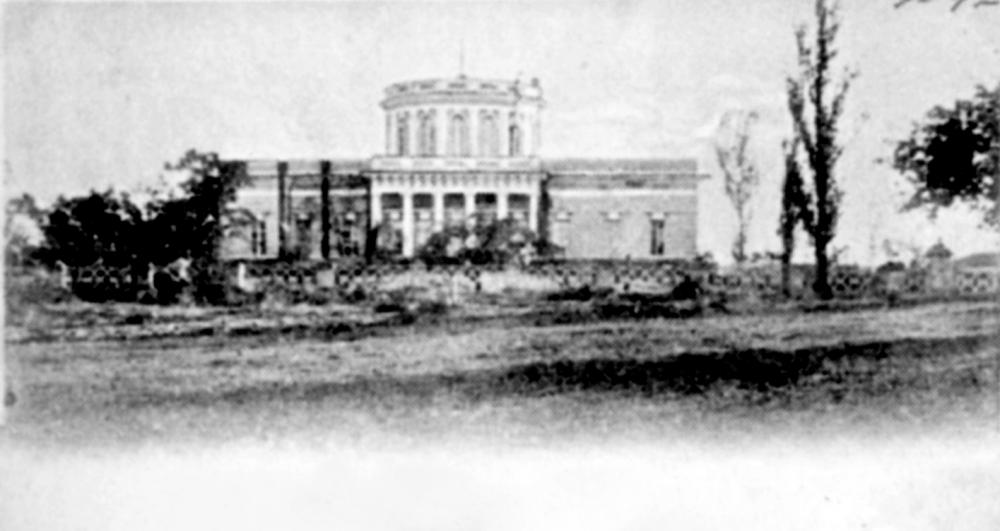
Fig. 1a. Mykolaiv Astronomical Observatory (1821), around 1900 (Wikipedia)
In 1816, Alexei Samuilowitsch Greig (1775--1845), amateur astronomer, became admiral, commander of the Black Sea Navy and governor of Nikolayev and Sevastopol. He knew the importance of astronomy for time keeping and positional astronomy for navigation at sea. With the support of the Naval Minister Marquis de Traversay, the Russian Tsar Alexander I granted permission to build the observatory in 1821.
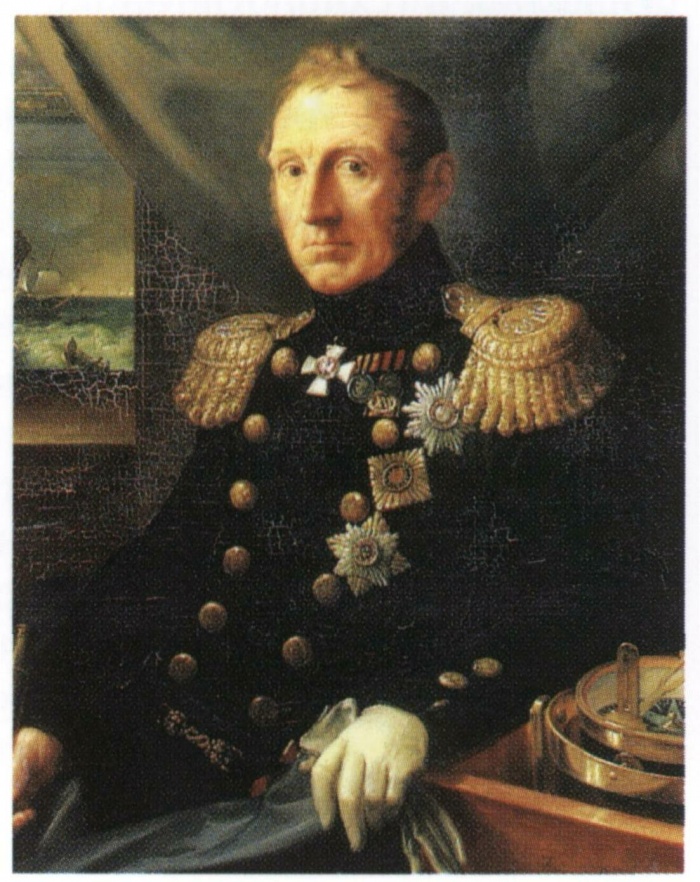
Fig. 1b. Alexei Samuilowitsch Greig (1775--1845) (Wikipedia)
The Chief Architect of the Black Sea Admiralty F.I. Wunsch designed the Nikolaev Astronomical Observatory (NAO) in the style of Classicism (1821/29). The impressive main building is together with three pavilions (1875, 1913, 1955) in a 7 ha astronomy park. In the pavilions, the Repsold meridian circle (MCR), Repsold vertical circle (VCR), and the Carl Zeiss Jena zone astrograph (ZA) can be found, well preserved until today.
Nikolaev Naval (and later Astronomical) Astronomical Observatory (NAO) is one of the oldest scientific institutions of South-Eastern Europe.
The NAO provided maps and charts to the Black Sea Navy (until 1911), trained captains and mariners in astronomical navigation, provided the time for the Navy, and certified the navigation instruments.
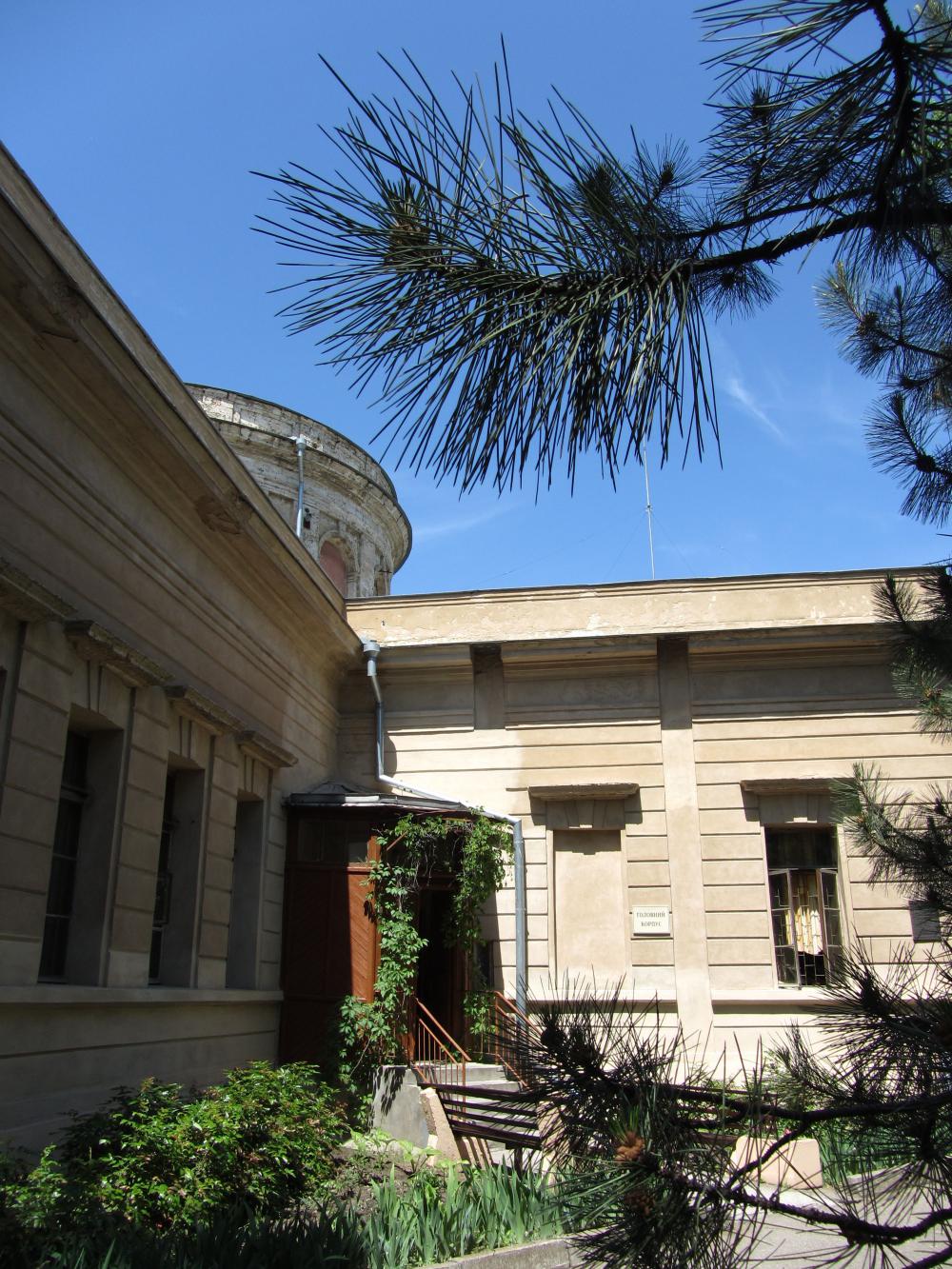
Fig. 2a. Mykolaiv Astronomical Observatory (1821), (Wikipedia, CC4, Yara shark)
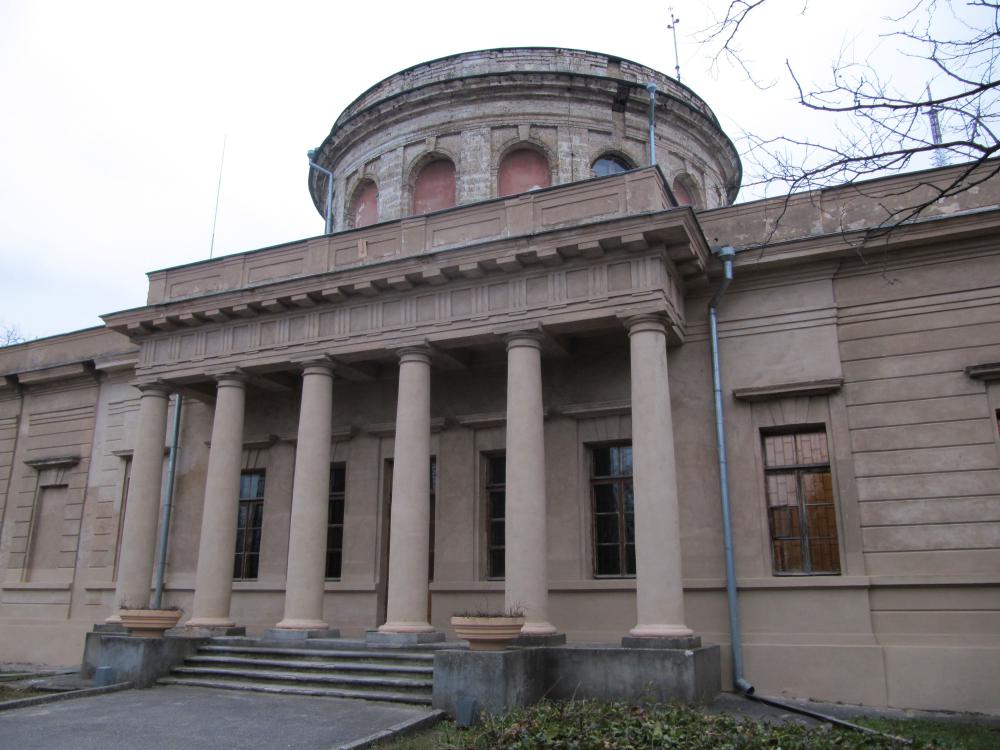
Fig. 2b. Mykolaiv Astronomical Observatory (1821), (Wikipedia, CC3, Mezinov Alexey Viktorovich)
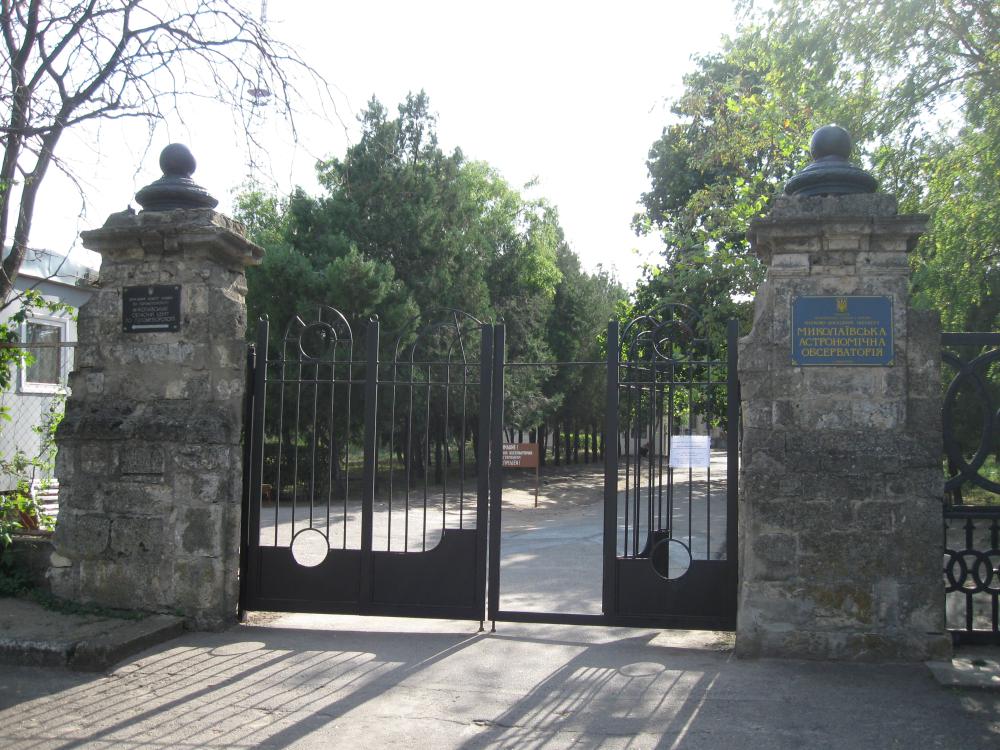
Fig. 2c. Mykolaiv Astronomical Observatory (1821), (Wikipedia, CC3, Igor Niko)
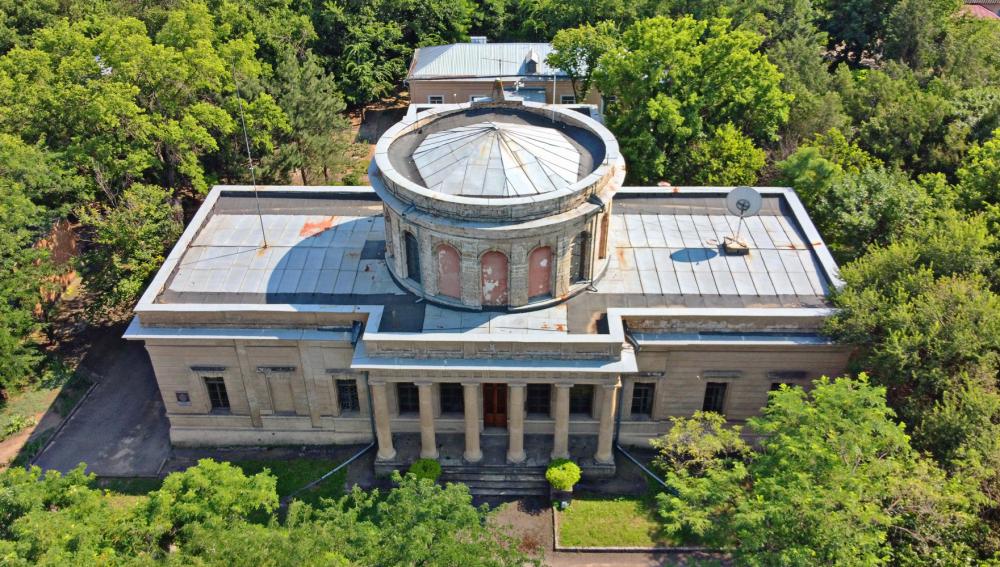
Fig. 2d. Mykolaiv Astronomical Observatory (1821), (Wikipedia, CC3, Oleksandr Malyon)
From 1912 until 1991, the Nikolaev Astronomical Observator was a Southern department of Pulkovo Observatory, St. Petersburg. More than 40 catalogues were compiled by the NAO astronomers.
In 1935, it became part of the network of scientific institutes of the Academy of Sciences. Since 1992, the NAO is an independent scientific organisation, since 2002, a research institute.
Research topics: astrometry, classical astronomy and time keeping for navigation.
History - InfoTheme: Astronomy from the Renaissance to the mid-twentieth century
Entity: 172
Subentity: 1
Version: 7
Status: PUB
Date: 2022-03-04 18:48:21
Author(s): Gudrun Wolfschmidt
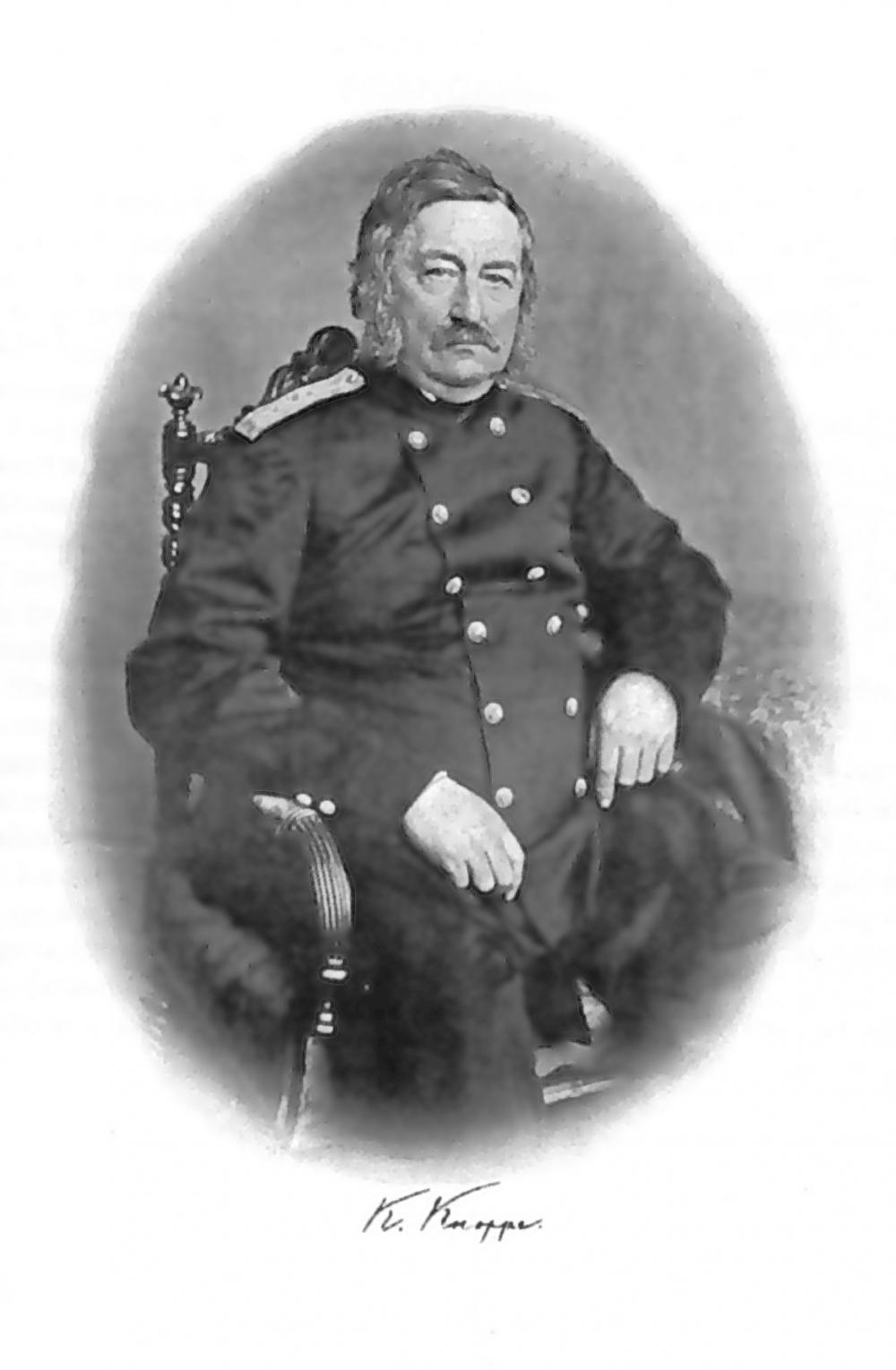
Fig. 3a. Karl Friedrich Knorre (1801--1883) (Wikipedia)

Fig. 3b. Coat of Arms of Karl Knorre (Wikipedia)
From 1821 to 1871, Karl Friedrich Knorre (1801--1883), son of Ernst Christoph Friedrich Knorre (1759--1810) -- an astronomy professor at Dorpat university, was appointed as the observatory’s first astronomer and director. In order to equip the Naval (and later Astronomical) Observatory in Nikolaev (NAO) with the most modern instruments, he traveled from 1825 to 1827 to the most prestigious observatories and watchmakers in Europe. He visited important astronomers such as Friedrich Georg Wilhelm Struve, Friedrich Wilhelm Bessel, Johann Franz Encke, Heinrich Christian Schumacher and François Arago, with whom he sometimes corresponded for life.
His main efforts were: Knorre provided charts, determined the accurate time with transit instruments and transmitted it to the chronometers, checked the navigation and geodetic instruments and provided certificates. Knorre also made a triangulation over the Black Sea costs with reference marks during 30 years (more than 350 points).
In his astronomical research, he was involved in the international cooperation in the search for Minor Planets (asteroids). He participated in the creation of the precise star charts of the Berlin Academy of Sciences based on a collaboration with Friedrich Wilhelm Bessel. On the fifth sheet of these Academic Star Charts, Karl Ludwig Hencke (1793--1866) discovered in 1845 the minor planet Astraea and Flora. Knorre also observed comets (Halley’s comet and the large comet in 1843) and was in good contact with Johann Franz Encke. In addition, he observed solar eclipses, occultation of stars by the Moon.
Knorre worked in the NAO for 51 years, in 1828, he became correspondent member of the Academy of Sciences in ST. Petersburg, in 1848 and 1863, member of the Royal Astronomical Society and of the Astronomische Gesellschaft (German Astronomical Society). In 1871, he retired as Vice-Admiral; he published 74 papers.
The next director was Iwan J. Kortazzi (1837--1903) from 1872 to 1903. Kortazzi determined the positions of more than 6,000 equatorial stars. He recorded the rotation time of Jupiter and studied the movement of the red spot.
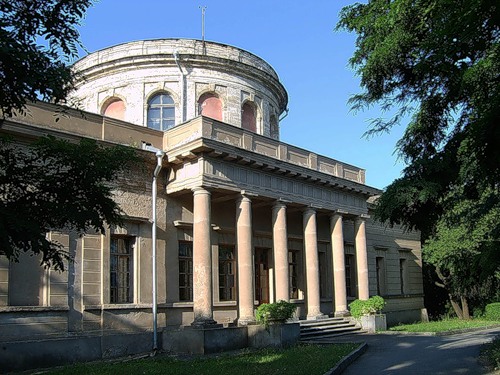
Fig. 4. Mykolaiv Astronomical Observatory (1821) (© NAO)
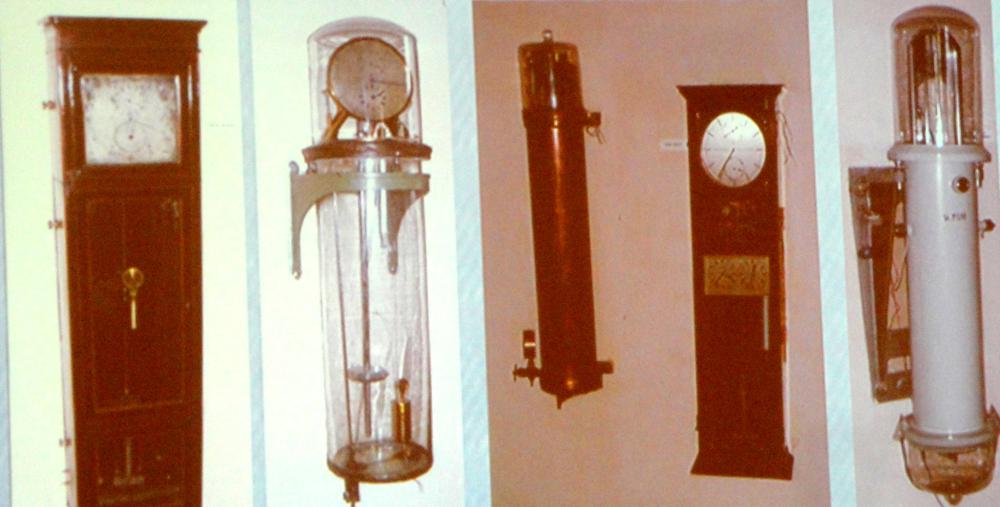
Fig. 5. Mykolaiv Astronomical Observatory, Astronomical Clocks of 19th-20th centuries: Sidereal clocks, Hohwü (1874), Riefler (1894), Shortt (1931), Fedchenko (1960s), (© G.I. Pinigin, NAO)
Instruments of Mykolaiv Astronomical Observatory
Astronomical Clocks of 19th-20th centuries:
- Sidereal clock, Andreas Hohwü of Amsterdam, No. 24 (1874)
- Sidereal clock, Sigmund Riefler of Munich, No. 12 (1894)
- Astronomical precision pendulum clock, William Hamilton Shortt (1881-1971) of London, No. 35 (1931)
- Astronomical precision pendulum clock with an isochronous suspension and an electromagnetically driven pendulum, F.M. Fedchenko of Moscow (1960s)
- Chronometers
Collection of astronomical geodetic and navigational instruments in the museum of the NAO:
- Brass sextant, Negretti & Zambra of London (19th century)
- Sundial, made by ZETER of Moscow
- Polimeter (humidity measurement), Wilhelm Lambrecht of Göttingen (*1859)
- Marine compass, made by Brouwer’s firm of St. Petersburg
- Standard of Fortin meter (1830)
- Artificial horizon with mercury
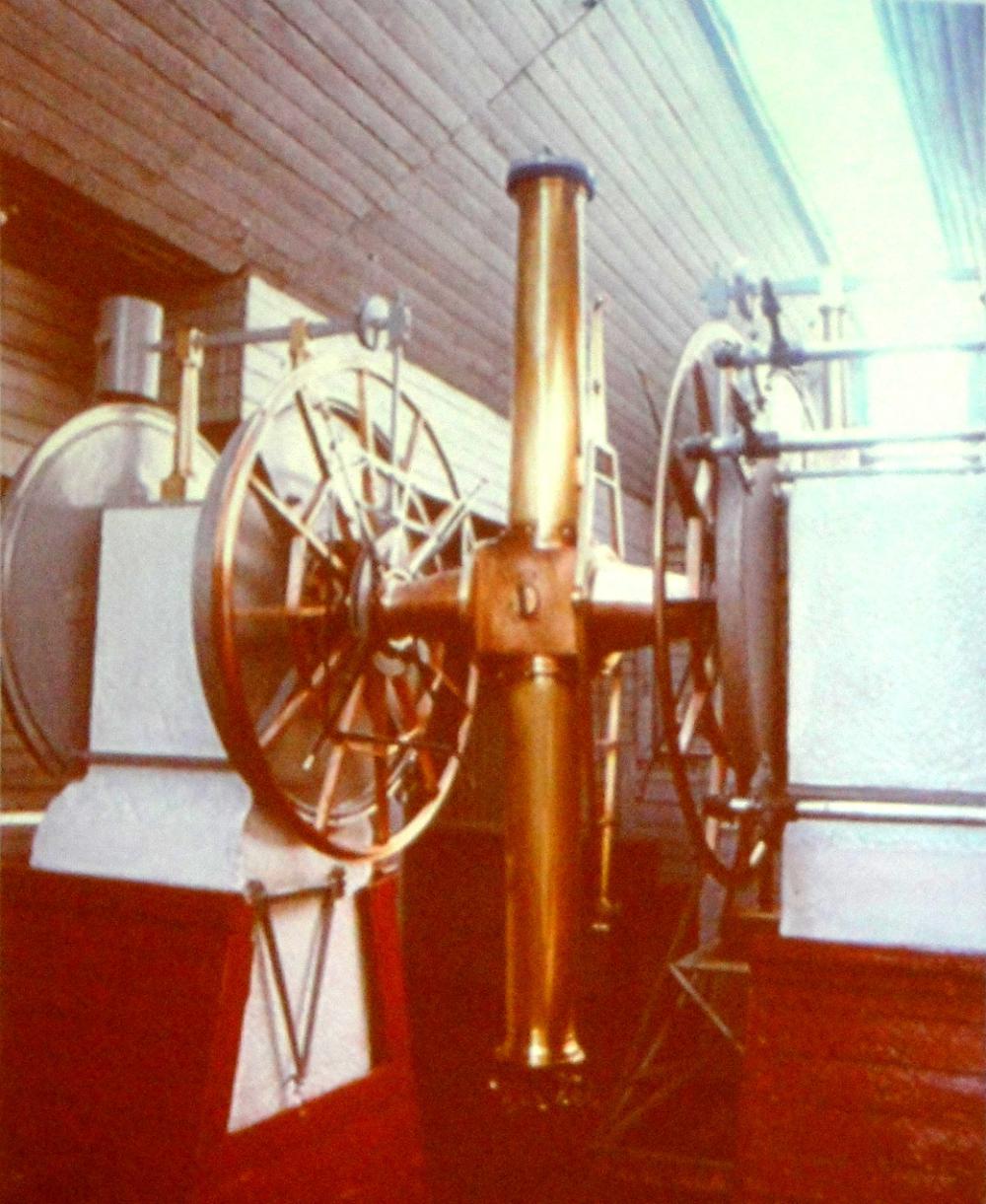
Fig. 6a. Mykolaiv Astronomical Observatory, Ertel/Repsold Meridian Circle (1834), (© G.I. Pinigin, NAO)
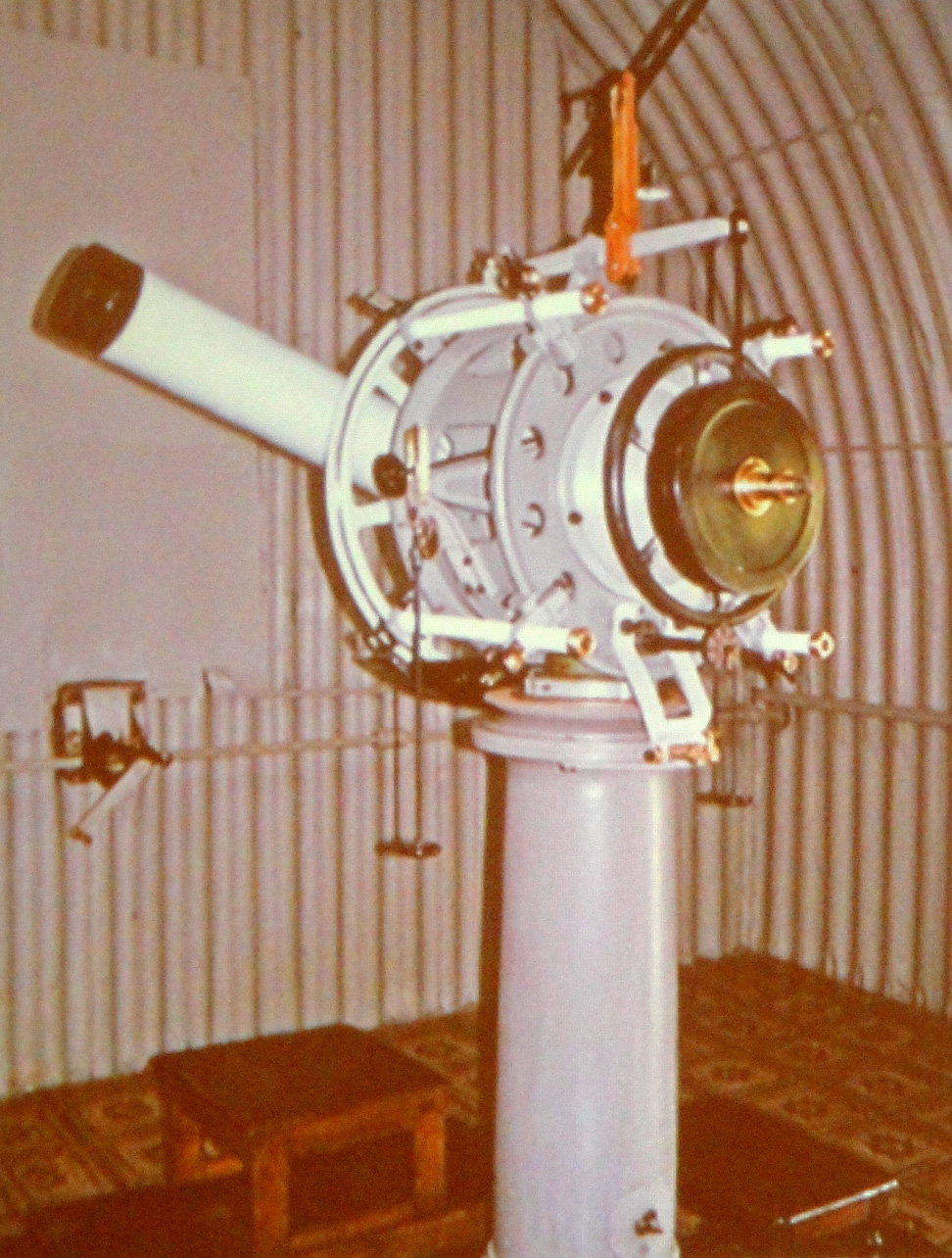
Fig. 6b. Mykolaiv Astronomical Observatory, Repsold Vertical Circle (1897), (© G.I. Pinigin, NAO)
Transit Instruments and Telescopes
- "Bamberg 6353" Transit Instrument
- MCR -- Meridian Circle (D=15cm, 3-ft, f=2.15m), Traugott Leberecht von Ertel (1778--1858) of Munich (since 1821 "Mathematical Mechanical Institute"), Repsold of Hamburg (1834, in Mykolaiv since 1955),
first light in 1840 in Pulkovo Observatory, in 1955 moved to NAO in Nikolaev. Many observational programmes were carried out with the Ertel/Repsold Meridian Circle during more than 40 years. Nine catalogues with stellar positions were obtained in NAO.
In 2002, the Repsold Meridian Circle was handed over to the museum of NAO.
- VCR -- Vertical Circle (D=11cm, f=14cm), made in 1868/1897, Repsold of Hamburg (1897), in Mykolaiv since 1913, used until 1985 more than 70 years. Five catalogues of absolute declinations of stars were obtained in Nikolaev.
In 2009, the Repsold Vertical Circle was handed over to the museum of NAO.
- ZA -- Zone Astrograph, Carl Zeiss of Jena (1925, used since 1961) for the cooperation in the network of the Astronomische Gesellschaft Catalogue (AGK)
- 5-ft Refractor with a 4-inch lens from Utzschneider & Fraunhofer
- 23-cm-Refractor (13 ft = 4.2m), Johann Adolf Repsold of Hamburg (1873/78)
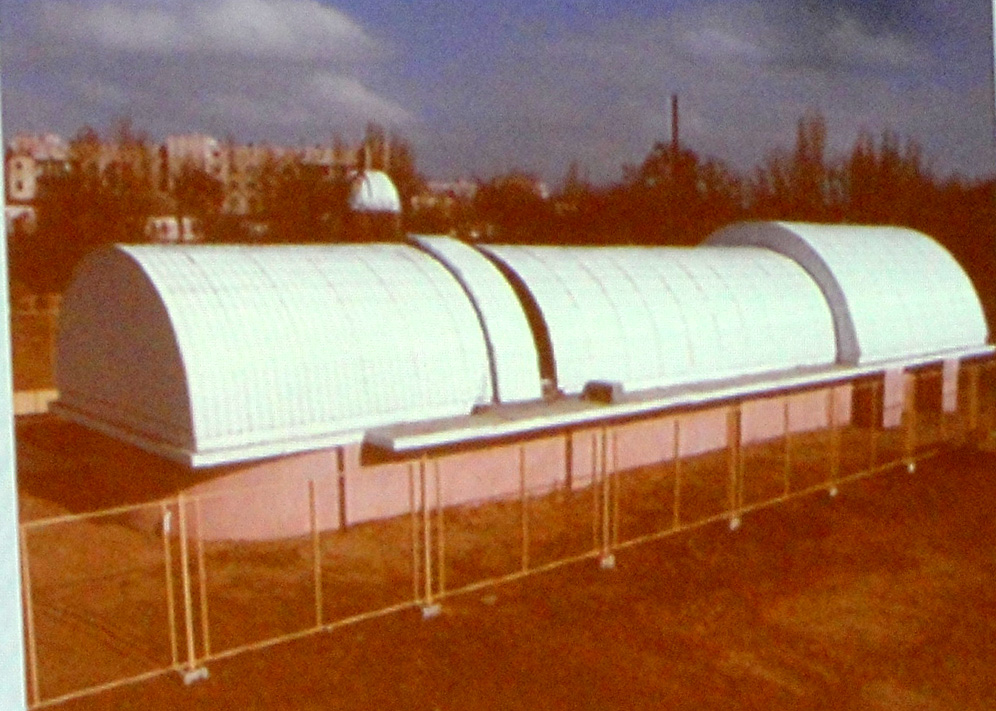
Fig. 7a. Mykolaiv Astronomical Observatory, Axial Meridian Circle (1996), (© G.I. Pinigin, NAO)
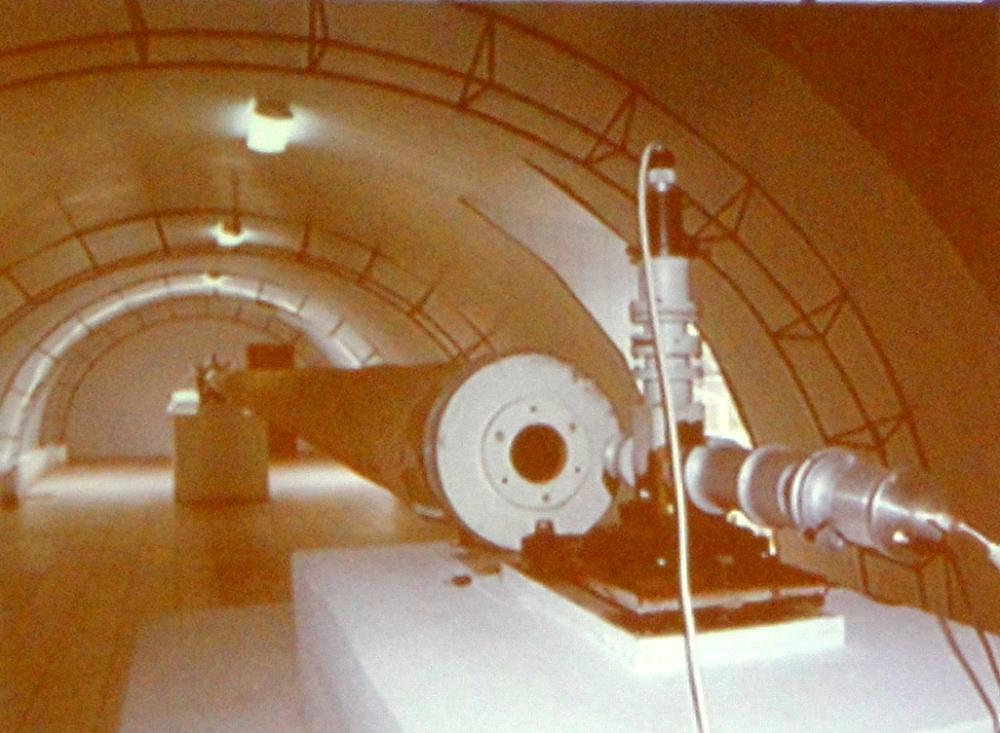
Fig. 7b. Mykolaiv Astronomical Observatory, Axial Meridian Circle (1996), (© G.I. Pinigin, NAO)
Modern Instruments -- Nikolaev Virtual Observatory (NikVO)
with computer control and remote access via local network and virtual observatory technologies were made in the RI NAO
- AMC -- Axial Meridian Circle (D=18cm, f=2.48m), (1996),
with CCD camera S1C (1040x1160 pixels, size 16x16 mkm), under computer control and remote access via local network, with original horizontal construction in the prime vertical and horizontal immovable autocollimator (D=18cm, f=12.360m).
The AMC performs positional observations of stars and small planets up to 16 magnitudes.
It corresponds to the best meridian telescopes in the world with small instrumental errors, such as `telescope flexure’, caused by weight, thermal deformation etc.
- FRT -- Fast Robotic Telescope, Maksutov system (D=30cm, f=1.5m), NAO (2004) with CCD camera Apogee Alta U9000 (3Kx3K, 12 mkm pixels), lim.mag. 17 mag., FOV 1.4°x1.4°
Compilation of a satellite catalogue (340 objects) at low and geostationary orbits:
- Satellite observation at a height of 100-2000 km with an accuracy of about ±1’’-5’’.
- Satellite observation at a height of 36,000 km with an accuracy of about ±0.3’’-0.8’’.
- MCT -- Multi-Channel Telescope (CCD detector)
- Mobitel -- Mobile Robotic Multi-channel Telescope, Maksutov system (D=50cm, f=3m), NAO (2009) with CCD camera Apogee Alta U9000 (3Kx3K, 12 mkm pixels), lim.mag. 18.5 mag., FOV 0.7°x0.7°, exp. 60sec.
Used for observations of Near-Earth artificial & natural Objects (NEO) and solar system bodies (about 80 NEO in 2008/12)
- Mobitel accuracy ±0.23’’-0.43’’.
Combination Method Observation (CMO), made by NAO, allows to observe movable NEO with velocities from 0.5 to 300’’/min.
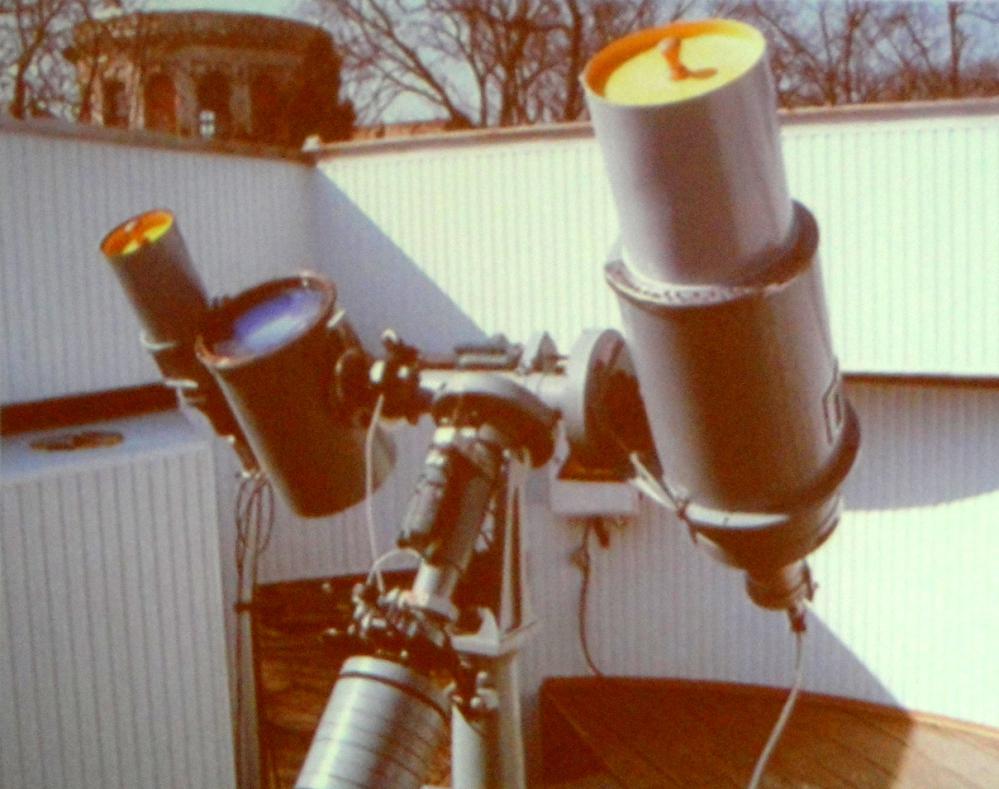
Fig. 8a. Mykolaiv Astronomical Observatory, Fast Robotic Telescope (2004), (© G.I. Pinigin, NAO)
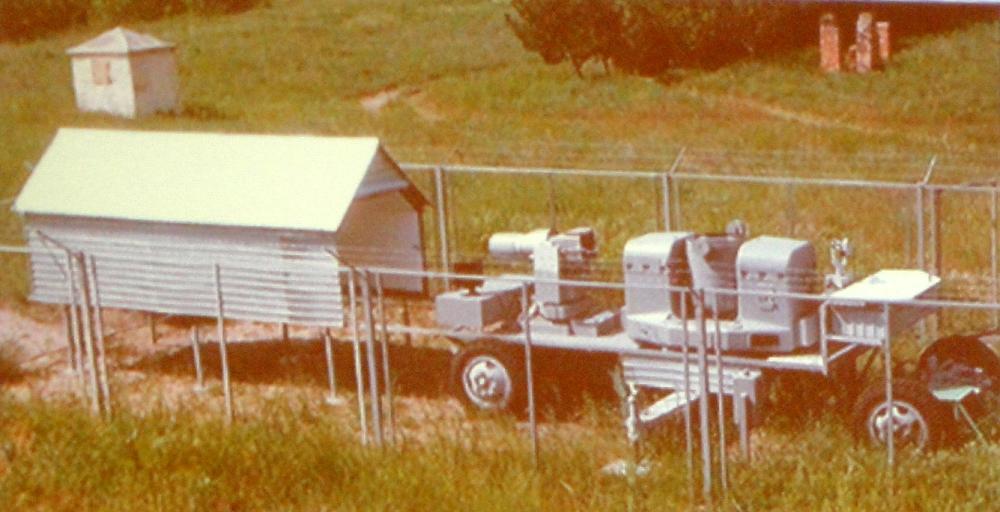
Fig. 8b. Mykolaiv Astronomical Observatory, Mobitel -- Mobile Robotic Multi-channel Telescope, Maksutov system, NAO (2009), (© G.I. Pinigin, NAO)
State of preservation - InfoTheme: Astronomy from the Renaissance to the mid-twentieth century
Entity: 172
Subentity: 1
Version: 3
Status: PUB
Date: 2022-03-01 21:14:54
Author(s): Gudrun Wolfschmidt
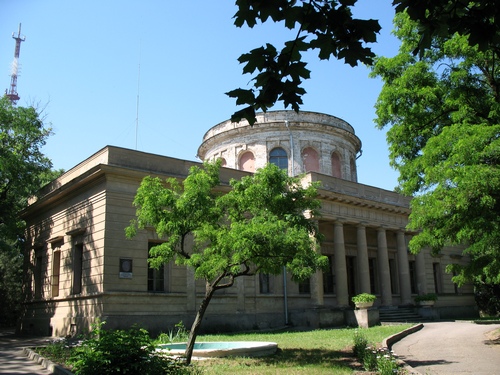
Fig. 9. Mykolaiv Astronomical Observatory (1821) (Wikipedia, www.sim)
The Nikolaev Astronomical Observatory (NAO) is an historical and astronomical complex with the reserved area of a total of 7.1 hectares; the sciectific and cultural traditions are preserved over two centuries.
In 1992, the observatory became an independent research institute of Ukraine. Today it reports to the State Committee for Science, Innovation and Information.
By the Decree of the Council of Ministers of the Ukrainian RSR JV9 970 of 24 August, 1963, the property is included in the National Inventory of the Monuments of History and Culture as a monument of architecture with national status (State Registry #535). The Mykolaiv Astronomical Observatory was proposed as a World Heritage Site by Ukraine (Ukranian Tentative List of the UNESCO WH #5116, 12/03/2007).
The NAO has a collection of photographic plates, digital databases, astrometric catalogues, and rare books.
Comparison with related/similar sites - InfoTheme: Astronomy from the Renaissance to the mid-twentieth century
Entity: 172
Subentity: 1
Version: 4
Status: PUB
Date: 2022-03-15 17:41:43
Author(s): Gudrun Wolfschmidt
The Nikolaev (Mykolayiv) Astronomical Observatory is the oldest naval observatory in south-eastern Europe, cf. naval observatories like Greenwich (1675), United States Naval Observatory (USNO) Washington, D.C. (1830) or Hamburg and Portugal.
The impressive main building with the large round hall and the entrance with six columns is an outstanding architecture, not comparable to other observatories. These initial architectural forms and design ideas are well preserved.
The Nikolaev Naval and Astronomical Observatory has a high level of authenticity and integrity. Original architectural features and instruments (moveable and immoveable), and also tangible and intangible heritage like archive material and photographic plates have been preserved.
During the 19th and 20th centuries more than 40 absolute and different catalogues, made in the NAO, with their accuracy were included in well-known fundamental catalogues like BD, AGK, FK3-FK5. The joint contribution to FK5 of NAO and Pulkovo observatory catalogues was about 36%, an intangible heritage.
See also Astronomical Observatories of Ukraine: Mykolaiv Observatory, Observatory of Kyiv National University, Odessa Observatory, Simeiz, Crimean Astrophysical Observatory near Yalta (2008):
"This transnational nomination brings together important astronomical observatories. Four observatories from the 19th and 20th centuries in Ukraine are included in the nomination: Mykolaiv Observatory, Astronomical Observatory of Kyiv National University, Astronomical Observatory of Odessa National University, and Crimean Astrophysical Observatory." - UNESCO World Heritage, Ukraine Tentative List (2008), Criteria (ii), (iv) and (vi) (cultural).
Threats or potential threats - InfoTheme: Astronomy from the Renaissance to the mid-twentieth century
Entity: 172
Subentity: 1
Version: 3
Status: PUB
Date: 2022-03-04 18:49:24
Author(s): Gudrun Wolfschmidt
no threats, but now the war in the Ukraine!
Present use - InfoTheme: Astronomy from the Renaissance to the mid-twentieth century
Entity: 172
Subentity: 1
Version: 3
Status: PUB
Date: 2022-03-01 21:16:24
Author(s): Gudrun Wolfschmidt
The Astronomical Observatory is still also used as Marine observatory, but also for the dissemination of the astronomical knowledge to the general public.
Astronomical relevance today - InfoTheme: Astronomy from the Renaissance to the mid-twentieth century
Entity: 172
Subentity: 1
Version: 2
Status: PUB
Date: 2021-08-28 02:26:38
Author(s): Gudrun Wolfschmidt
The NAO is still used as astronomical observatory with the research topics:
- dynamics of the solar system bodies
- research of the Near-Earth objects
- creation of stellar astrometric catalogues
- informational support of astronomical research
- history of astronomy.
References
Bibliography (books and published articles) - InfoTheme: Astronomy from the Renaissance to the mid-twentieth century
Entity: 172
Subentity: 1
Version: 5
Status: PUB
Date: 2022-03-04 18:50:38
Author(s): Gudrun Wolfschmidt
- Fedchenko, F. M.: Astronomicheskie chasy s elektromagnitnym vozbuzhdeniem kolebanii maiatnika. In: Issledovaniia v oblasti izmerenii vremeni. Moscow 1962.
- Pinigin, G.I.; Petrov, G.M. & J.A. Pozhalova: Nikolaev Astronomical Observatory 185 years II. In: Astronomical Calendar 108 (2006).
See also: Ed. by I. Kahn. St. Petersburg 2005, p. 161-167.
- Pinigin, G.I. et al.: B5. Astronomical Observatories in Ukraine relevance to the Unesco Astronomy World Heritage Initiative. In: Astronomy and World Heritage: Across Time and Continents. Proceedings of the UNESCO Conference Kazan, August 2009. Ed. by Mikhail Ya. Marov. Associate Scientific Editors: Olga B. Dluzhnevskaya, Jarita C. Holbrook, Viktor K. Abalakin, Yuri A. Nefedyev, Tamila M. Potyomkina. International Astronomical Union, UNESCO. Kazan: Publishing House of Kazan University 2016, p. 203-211.
- Pinigin, G.I., private communication, lecture in the IAU GA in Beijing (2012).
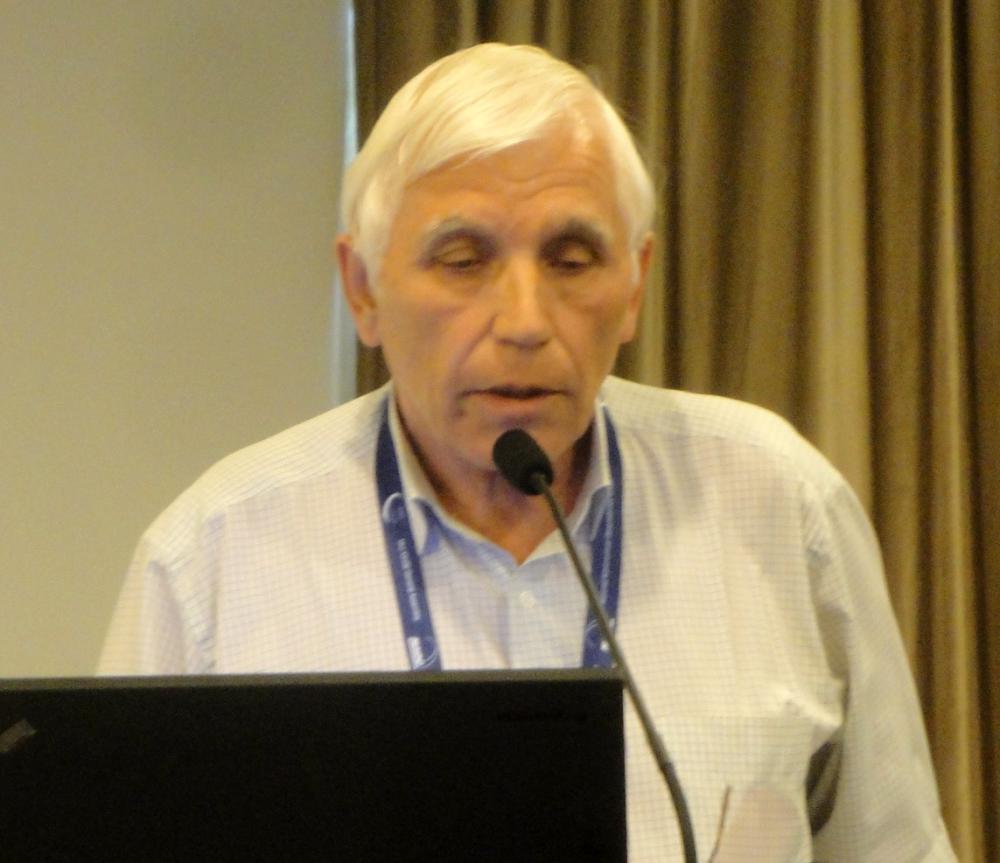
Fig. 9. Gennadiy Ivanovich Pinigin (Photo: Gudrun Wolfschmidt, 2012 during the IAU GA)
Links to external sites - InfoTheme: Astronomy from the Renaissance to the mid-twentieth century
Entity: 172
Subentity: 1
Version: 4
Status: PUB
Date: 2022-03-04 18:51:18
Author(s): Gudrun Wolfschmidt
- Astronomical Observatories of Ukraine #5267
- Nikolaev Astronomical Observatory
- Mykolaiv Observatory (English)
- Mykolaiv Observatory (German)
- Axial Meridian circle (1995), Nikolaev Observatory
- Nikolaev Observatory, Tentative List 5116 World Heritage
- Nikolaev Observatory, Tentative List 5267 World Heritage
Links to external on-line pictures - InfoTheme: Astronomy from the Renaissance to the mid-twentieth century
Entity: 172
Subentity: 1
Version: 1
Status: PUB
Date: 2021-03-13 04:19:28
Author(s): Gudrun Wolfschmidt
no information available
PrintPrint contents of 'Description' tab
(opens in a new window) Theme
Astronomy from the Renaissance to the mid-twentieth century
Case Study Navigation
- InfoTheme: Astronomy from the Renaissance to the mid-twentieth century
Entity: 172
Subentity: 1
Version: 5
Status: PUB
Date: 2022-03-09 03:26:08
Author(s): Gudrun Wolfschmidt
Mykolaiv Astronomical Observatory, 1 Observatorna St., Mykolayiv, Ukraine
Mykolayiv or Mykolaiv (German: Mykolajiw or Nikolajew, English: Mykolaiv, Russian: Nikolaev or Nikolayev)
Location - InfoTheme: Astronomy from the Renaissance to the mid-twentieth century
Entity: 172
Subentity: 1
Version: 3
Status: PUB
Date: 2021-08-28 02:23:17
Author(s): Gudrun Wolfschmidt
Latitude 46°58’18’’ N, Longitude 31°58’32’’ E,
Elevation 52m above mean sea level.
IAU observatory code - InfoTheme: Astronomy from the Renaissance to the mid-twentieth century
Entity: 172
Subentity: 1
Version: 1
Status: PUB
Date: 2021-03-13 04:19:28
Author(s): Gudrun Wolfschmidt
089
Description of (scientific/cultural/natural) heritage - InfoTheme: Astronomy from the Renaissance to the mid-twentieth century
Entity: 172
Subentity: 1
Version: 6
Status: PUB
Date: 2022-03-04 18:46:30
Author(s): Gudrun Wolfschmidt

Fig. 1a. Mykolaiv Astronomical Observatory (1821), around 1900 (Wikipedia)
In 1816, Alexei Samuilowitsch Greig (1775--1845), amateur astronomer, became admiral, commander of the Black Sea Navy and governor of Nikolayev and Sevastopol. He knew the importance of astronomy for time keeping and positional astronomy for navigation at sea. With the support of the Naval Minister Marquis de Traversay, the Russian Tsar Alexander I granted permission to build the observatory in 1821.

Fig. 1b. Alexei Samuilowitsch Greig (1775--1845) (Wikipedia)
The Chief Architect of the Black Sea Admiralty F.I. Wunsch designed the Nikolaev Astronomical Observatory (NAO) in the style of Classicism (1821/29). The impressive main building is together with three pavilions (1875, 1913, 1955) in a 7 ha astronomy park. In the pavilions, the Repsold meridian circle (MCR), Repsold vertical circle (VCR), and the Carl Zeiss Jena zone astrograph (ZA) can be found, well preserved until today.
Nikolaev Naval (and later Astronomical) Astronomical Observatory (NAO) is one of the oldest scientific institutions of South-Eastern Europe.
The NAO provided maps and charts to the Black Sea Navy (until 1911), trained captains and mariners in astronomical navigation, provided the time for the Navy, and certified the navigation instruments.

Fig. 2a. Mykolaiv Astronomical Observatory (1821), (Wikipedia, CC4, Yara shark)

Fig. 2b. Mykolaiv Astronomical Observatory (1821), (Wikipedia, CC3, Mezinov Alexey Viktorovich)

Fig. 2c. Mykolaiv Astronomical Observatory (1821), (Wikipedia, CC3, Igor Niko)

Fig. 2d. Mykolaiv Astronomical Observatory (1821), (Wikipedia, CC3, Oleksandr Malyon)
From 1912 until 1991, the Nikolaev Astronomical Observator was a Southern department of Pulkovo Observatory, St. Petersburg. More than 40 catalogues were compiled by the NAO astronomers.
In 1935, it became part of the network of scientific institutes of the Academy of Sciences. Since 1992, the NAO is an independent scientific organisation, since 2002, a research institute.
Research topics: astrometry, classical astronomy and time keeping for navigation.
History - InfoTheme: Astronomy from the Renaissance to the mid-twentieth century
Entity: 172
Subentity: 1
Version: 7
Status: PUB
Date: 2022-03-04 18:48:21
Author(s): Gudrun Wolfschmidt

Fig. 3a. Karl Friedrich Knorre (1801--1883) (Wikipedia)

Fig. 3b. Coat of Arms of Karl Knorre (Wikipedia)
From 1821 to 1871, Karl Friedrich Knorre (1801--1883), son of Ernst Christoph Friedrich Knorre (1759--1810) -- an astronomy professor at Dorpat university, was appointed as the observatory’s first astronomer and director. In order to equip the Naval (and later Astronomical) Observatory in Nikolaev (NAO) with the most modern instruments, he traveled from 1825 to 1827 to the most prestigious observatories and watchmakers in Europe. He visited important astronomers such as Friedrich Georg Wilhelm Struve, Friedrich Wilhelm Bessel, Johann Franz Encke, Heinrich Christian Schumacher and François Arago, with whom he sometimes corresponded for life.
His main efforts were: Knorre provided charts, determined the accurate time with transit instruments and transmitted it to the chronometers, checked the navigation and geodetic instruments and provided certificates. Knorre also made a triangulation over the Black Sea costs with reference marks during 30 years (more than 350 points).
In his astronomical research, he was involved in the international cooperation in the search for Minor Planets (asteroids). He participated in the creation of the precise star charts of the Berlin Academy of Sciences based on a collaboration with Friedrich Wilhelm Bessel. On the fifth sheet of these Academic Star Charts, Karl Ludwig Hencke (1793--1866) discovered in 1845 the minor planet Astraea and Flora. Knorre also observed comets (Halley’s comet and the large comet in 1843) and was in good contact with Johann Franz Encke. In addition, he observed solar eclipses, occultation of stars by the Moon.
Knorre worked in the NAO for 51 years, in 1828, he became correspondent member of the Academy of Sciences in ST. Petersburg, in 1848 and 1863, member of the Royal Astronomical Society and of the Astronomische Gesellschaft (German Astronomical Society). In 1871, he retired as Vice-Admiral; he published 74 papers.
The next director was Iwan J. Kortazzi (1837--1903) from 1872 to 1903. Kortazzi determined the positions of more than 6,000 equatorial stars. He recorded the rotation time of Jupiter and studied the movement of the red spot.

Fig. 4. Mykolaiv Astronomical Observatory (1821) (© NAO)

Fig. 5. Mykolaiv Astronomical Observatory, Astronomical Clocks of 19th-20th centuries: Sidereal clocks, Hohwü (1874), Riefler (1894), Shortt (1931), Fedchenko (1960s), (© G.I. Pinigin, NAO)
Instruments of Mykolaiv Astronomical Observatory
Astronomical Clocks of 19th-20th centuries:
- Sidereal clock, Andreas Hohwü of Amsterdam, No. 24 (1874)
- Sidereal clock, Sigmund Riefler of Munich, No. 12 (1894)
- Astronomical precision pendulum clock, William Hamilton Shortt (1881-1971) of London, No. 35 (1931)
- Astronomical precision pendulum clock with an isochronous suspension and an electromagnetically driven pendulum, F.M. Fedchenko of Moscow (1960s)
- Chronometers
Collection of astronomical geodetic and navigational instruments in the museum of the NAO:
- Brass sextant, Negretti & Zambra of London (19th century)
- Sundial, made by ZETER of Moscow
- Polimeter (humidity measurement), Wilhelm Lambrecht of Göttingen (*1859)
- Marine compass, made by Brouwer’s firm of St. Petersburg
- Standard of Fortin meter (1830)
- Artificial horizon with mercury

Fig. 6a. Mykolaiv Astronomical Observatory, Ertel/Repsold Meridian Circle (1834), (© G.I. Pinigin, NAO)

Fig. 6b. Mykolaiv Astronomical Observatory, Repsold Vertical Circle (1897), (© G.I. Pinigin, NAO)
Transit Instruments and Telescopes
- "Bamberg 6353" Transit Instrument
- MCR -- Meridian Circle (D=15cm, 3-ft, f=2.15m), Traugott Leberecht von Ertel (1778--1858) of Munich (since 1821 "Mathematical Mechanical Institute"), Repsold of Hamburg (1834, in Mykolaiv since 1955),
first light in 1840 in Pulkovo Observatory, in 1955 moved to NAO in Nikolaev. Many observational programmes were carried out with the Ertel/Repsold Meridian Circle during more than 40 years. Nine catalogues with stellar positions were obtained in NAO.
In 2002, the Repsold Meridian Circle was handed over to the museum of NAO.
- VCR -- Vertical Circle (D=11cm, f=14cm), made in 1868/1897, Repsold of Hamburg (1897), in Mykolaiv since 1913, used until 1985 more than 70 years. Five catalogues of absolute declinations of stars were obtained in Nikolaev.
In 2009, the Repsold Vertical Circle was handed over to the museum of NAO.
- ZA -- Zone Astrograph, Carl Zeiss of Jena (1925, used since 1961) for the cooperation in the network of the Astronomische Gesellschaft Catalogue (AGK)
- 5-ft Refractor with a 4-inch lens from Utzschneider & Fraunhofer
- 23-cm-Refractor (13 ft = 4.2m), Johann Adolf Repsold of Hamburg (1873/78)

Fig. 7a. Mykolaiv Astronomical Observatory, Axial Meridian Circle (1996), (© G.I. Pinigin, NAO)

Fig. 7b. Mykolaiv Astronomical Observatory, Axial Meridian Circle (1996), (© G.I. Pinigin, NAO)
Modern Instruments -- Nikolaev Virtual Observatory (NikVO)
with computer control and remote access via local network and virtual observatory technologies were made in the RI NAO
- AMC -- Axial Meridian Circle (D=18cm, f=2.48m), (1996),
with CCD camera S1C (1040x1160 pixels, size 16x16 mkm), under computer control and remote access via local network, with original horizontal construction in the prime vertical and horizontal immovable autocollimator (D=18cm, f=12.360m).
The AMC performs positional observations of stars and small planets up to 16 magnitudes.
It corresponds to the best meridian telescopes in the world with small instrumental errors, such as `telescope flexure’, caused by weight, thermal deformation etc.
- FRT -- Fast Robotic Telescope, Maksutov system (D=30cm, f=1.5m), NAO (2004) with CCD camera Apogee Alta U9000 (3Kx3K, 12 mkm pixels), lim.mag. 17 mag., FOV 1.4°x1.4°
Compilation of a satellite catalogue (340 objects) at low and geostationary orbits:
- Satellite observation at a height of 100-2000 km with an accuracy of about ±1’’-5’’.
- Satellite observation at a height of 36,000 km with an accuracy of about ±0.3’’-0.8’’.
- MCT -- Multi-Channel Telescope (CCD detector)
- Mobitel -- Mobile Robotic Multi-channel Telescope, Maksutov system (D=50cm, f=3m), NAO (2009) with CCD camera Apogee Alta U9000 (3Kx3K, 12 mkm pixels), lim.mag. 18.5 mag., FOV 0.7°x0.7°, exp. 60sec.
Used for observations of Near-Earth artificial & natural Objects (NEO) and solar system bodies (about 80 NEO in 2008/12)
- Mobitel accuracy ±0.23’’-0.43’’.
Combination Method Observation (CMO), made by NAO, allows to observe movable NEO with velocities from 0.5 to 300’’/min.

Fig. 8a. Mykolaiv Astronomical Observatory, Fast Robotic Telescope (2004), (© G.I. Pinigin, NAO)

Fig. 8b. Mykolaiv Astronomical Observatory, Mobitel -- Mobile Robotic Multi-channel Telescope, Maksutov system, NAO (2009), (© G.I. Pinigin, NAO)
State of preservation - InfoTheme: Astronomy from the Renaissance to the mid-twentieth century
Entity: 172
Subentity: 1
Version: 3
Status: PUB
Date: 2022-03-01 21:14:54
Author(s): Gudrun Wolfschmidt

Fig. 9. Mykolaiv Astronomical Observatory (1821) (Wikipedia, www.sim)
The Nikolaev Astronomical Observatory (NAO) is an historical and astronomical complex with the reserved area of a total of 7.1 hectares; the sciectific and cultural traditions are preserved over two centuries.
In 1992, the observatory became an independent research institute of Ukraine. Today it reports to the State Committee for Science, Innovation and Information.
By the Decree of the Council of Ministers of the Ukrainian RSR JV9 970 of 24 August, 1963, the property is included in the National Inventory of the Monuments of History and Culture as a monument of architecture with national status (State Registry #535). The Mykolaiv Astronomical Observatory was proposed as a World Heritage Site by Ukraine (Ukranian Tentative List of the UNESCO WH #5116, 12/03/2007).
The NAO has a collection of photographic plates, digital databases, astrometric catalogues, and rare books.
Comparison with related/similar sites - InfoTheme: Astronomy from the Renaissance to the mid-twentieth century
Entity: 172
Subentity: 1
Version: 4
Status: PUB
Date: 2022-03-15 17:41:43
Author(s): Gudrun Wolfschmidt
The Nikolaev (Mykolayiv) Astronomical Observatory is the oldest naval observatory in south-eastern Europe, cf. naval observatories like Greenwich (1675), United States Naval Observatory (USNO) Washington, D.C. (1830) or Hamburg and Portugal.
The impressive main building with the large round hall and the entrance with six columns is an outstanding architecture, not comparable to other observatories. These initial architectural forms and design ideas are well preserved.
The Nikolaev Naval and Astronomical Observatory has a high level of authenticity and integrity. Original architectural features and instruments (moveable and immoveable), and also tangible and intangible heritage like archive material and photographic plates have been preserved.
During the 19th and 20th centuries more than 40 absolute and different catalogues, made in the NAO, with their accuracy were included in well-known fundamental catalogues like BD, AGK, FK3-FK5. The joint contribution to FK5 of NAO and Pulkovo observatory catalogues was about 36%, an intangible heritage.
See also Astronomical Observatories of Ukraine: Mykolaiv Observatory, Observatory of Kyiv National University, Odessa Observatory, Simeiz, Crimean Astrophysical Observatory near Yalta (2008):
"This transnational nomination brings together important astronomical observatories. Four observatories from the 19th and 20th centuries in Ukraine are included in the nomination: Mykolaiv Observatory, Astronomical Observatory of Kyiv National University, Astronomical Observatory of Odessa National University, and Crimean Astrophysical Observatory." - UNESCO World Heritage, Ukraine Tentative List (2008), Criteria (ii), (iv) and (vi) (cultural).
Threats or potential threats - InfoTheme: Astronomy from the Renaissance to the mid-twentieth century
Entity: 172
Subentity: 1
Version: 3
Status: PUB
Date: 2022-03-04 18:49:24
Author(s): Gudrun Wolfschmidt
no threats, but now the war in the Ukraine!
Present use - InfoTheme: Astronomy from the Renaissance to the mid-twentieth century
Entity: 172
Subentity: 1
Version: 3
Status: PUB
Date: 2022-03-01 21:16:24
Author(s): Gudrun Wolfschmidt
The Astronomical Observatory is still also used as Marine observatory, but also for the dissemination of the astronomical knowledge to the general public.
Astronomical relevance today - InfoTheme: Astronomy from the Renaissance to the mid-twentieth century
Entity: 172
Subentity: 1
Version: 2
Status: PUB
Date: 2021-08-28 02:26:38
Author(s): Gudrun Wolfschmidt
The NAO is still used as astronomical observatory with the research topics:
- dynamics of the solar system bodies
- research of the Near-Earth objects
- creation of stellar astrometric catalogues
- informational support of astronomical research
- history of astronomy.
References
Bibliography (books and published articles) - InfoTheme: Astronomy from the Renaissance to the mid-twentieth century
Entity: 172
Subentity: 1
Version: 5
Status: PUB
Date: 2022-03-04 18:50:38
Author(s): Gudrun Wolfschmidt
- Fedchenko, F. M.: Astronomicheskie chasy s elektromagnitnym vozbuzhdeniem kolebanii maiatnika. In: Issledovaniia v oblasti izmerenii vremeni. Moscow 1962.
- Pinigin, G.I.; Petrov, G.M. & J.A. Pozhalova: Nikolaev Astronomical Observatory 185 years II. In: Astronomical Calendar 108 (2006).
See also: Ed. by I. Kahn. St. Petersburg 2005, p. 161-167.
- Pinigin, G.I. et al.: B5. Astronomical Observatories in Ukraine relevance to the Unesco Astronomy World Heritage Initiative. In: Astronomy and World Heritage: Across Time and Continents. Proceedings of the UNESCO Conference Kazan, August 2009. Ed. by Mikhail Ya. Marov. Associate Scientific Editors: Olga B. Dluzhnevskaya, Jarita C. Holbrook, Viktor K. Abalakin, Yuri A. Nefedyev, Tamila M. Potyomkina. International Astronomical Union, UNESCO. Kazan: Publishing House of Kazan University 2016, p. 203-211.
- Pinigin, G.I., private communication, lecture in the IAU GA in Beijing (2012).

Fig. 9. Gennadiy Ivanovich Pinigin (Photo: Gudrun Wolfschmidt, 2012 during the IAU GA)
Links to external sites - InfoTheme: Astronomy from the Renaissance to the mid-twentieth century
Entity: 172
Subentity: 1
Version: 4
Status: PUB
Date: 2022-03-04 18:51:18
Author(s): Gudrun Wolfschmidt
- Astronomical Observatories of Ukraine #5267
- Nikolaev Astronomical Observatory
- Mykolaiv Observatory (English)
- Mykolaiv Observatory (German)
- Axial Meridian circle (1995), Nikolaev Observatory
- Nikolaev Observatory, Tentative List 5116 World Heritage
- Nikolaev Observatory, Tentative List 5267 World Heritage
Links to external on-line pictures - InfoTheme: Astronomy from the Renaissance to the mid-twentieth century
Entity: 172
Subentity: 1
Version: 1
Status: PUB
Date: 2021-03-13 04:19:28
Author(s): Gudrun Wolfschmidt
no information available
PrintPrint contents of 'Description' tab
(opens in a new window) Theme
Astronomy from the Renaissance to the mid-twentieth century
Case Study Navigation
- InfoTheme: Astronomy from the Renaissance to the mid-twentieth century
Entity: 172
Subentity: 1
Version: 3
Status: PUB
Date: 2021-08-28 02:23:17
Author(s): Gudrun Wolfschmidt
Latitude 46°58’18’’ N, Longitude 31°58’32’’ E,
Elevation 52m above mean sea level.
IAU observatory code - InfoTheme: Astronomy from the Renaissance to the mid-twentieth century
Entity: 172
Subentity: 1
Version: 1
Status: PUB
Date: 2021-03-13 04:19:28
Author(s): Gudrun Wolfschmidt
089
Description of (scientific/cultural/natural) heritage - InfoTheme: Astronomy from the Renaissance to the mid-twentieth century
Entity: 172
Subentity: 1
Version: 6
Status: PUB
Date: 2022-03-04 18:46:30
Author(s): Gudrun Wolfschmidt

Fig. 1a. Mykolaiv Astronomical Observatory (1821), around 1900 (Wikipedia)
In 1816, Alexei Samuilowitsch Greig (1775--1845), amateur astronomer, became admiral, commander of the Black Sea Navy and governor of Nikolayev and Sevastopol. He knew the importance of astronomy for time keeping and positional astronomy for navigation at sea. With the support of the Naval Minister Marquis de Traversay, the Russian Tsar Alexander I granted permission to build the observatory in 1821.

Fig. 1b. Alexei Samuilowitsch Greig (1775--1845) (Wikipedia)
The Chief Architect of the Black Sea Admiralty F.I. Wunsch designed the Nikolaev Astronomical Observatory (NAO) in the style of Classicism (1821/29). The impressive main building is together with three pavilions (1875, 1913, 1955) in a 7 ha astronomy park. In the pavilions, the Repsold meridian circle (MCR), Repsold vertical circle (VCR), and the Carl Zeiss Jena zone astrograph (ZA) can be found, well preserved until today.
Nikolaev Naval (and later Astronomical) Astronomical Observatory (NAO) is one of the oldest scientific institutions of South-Eastern Europe.
The NAO provided maps and charts to the Black Sea Navy (until 1911), trained captains and mariners in astronomical navigation, provided the time for the Navy, and certified the navigation instruments.

Fig. 2a. Mykolaiv Astronomical Observatory (1821), (Wikipedia, CC4, Yara shark)

Fig. 2b. Mykolaiv Astronomical Observatory (1821), (Wikipedia, CC3, Mezinov Alexey Viktorovich)

Fig. 2c. Mykolaiv Astronomical Observatory (1821), (Wikipedia, CC3, Igor Niko)

Fig. 2d. Mykolaiv Astronomical Observatory (1821), (Wikipedia, CC3, Oleksandr Malyon)
From 1912 until 1991, the Nikolaev Astronomical Observator was a Southern department of Pulkovo Observatory, St. Petersburg. More than 40 catalogues were compiled by the NAO astronomers.
In 1935, it became part of the network of scientific institutes of the Academy of Sciences. Since 1992, the NAO is an independent scientific organisation, since 2002, a research institute.
Research topics: astrometry, classical astronomy and time keeping for navigation.
History - InfoTheme: Astronomy from the Renaissance to the mid-twentieth century
Entity: 172
Subentity: 1
Version: 7
Status: PUB
Date: 2022-03-04 18:48:21
Author(s): Gudrun Wolfschmidt

Fig. 3a. Karl Friedrich Knorre (1801--1883) (Wikipedia)

Fig. 3b. Coat of Arms of Karl Knorre (Wikipedia)
From 1821 to 1871, Karl Friedrich Knorre (1801--1883), son of Ernst Christoph Friedrich Knorre (1759--1810) -- an astronomy professor at Dorpat university, was appointed as the observatory’s first astronomer and director. In order to equip the Naval (and later Astronomical) Observatory in Nikolaev (NAO) with the most modern instruments, he traveled from 1825 to 1827 to the most prestigious observatories and watchmakers in Europe. He visited important astronomers such as Friedrich Georg Wilhelm Struve, Friedrich Wilhelm Bessel, Johann Franz Encke, Heinrich Christian Schumacher and François Arago, with whom he sometimes corresponded for life.
His main efforts were: Knorre provided charts, determined the accurate time with transit instruments and transmitted it to the chronometers, checked the navigation and geodetic instruments and provided certificates. Knorre also made a triangulation over the Black Sea costs with reference marks during 30 years (more than 350 points).
In his astronomical research, he was involved in the international cooperation in the search for Minor Planets (asteroids). He participated in the creation of the precise star charts of the Berlin Academy of Sciences based on a collaboration with Friedrich Wilhelm Bessel. On the fifth sheet of these Academic Star Charts, Karl Ludwig Hencke (1793--1866) discovered in 1845 the minor planet Astraea and Flora. Knorre also observed comets (Halley’s comet and the large comet in 1843) and was in good contact with Johann Franz Encke. In addition, he observed solar eclipses, occultation of stars by the Moon.
Knorre worked in the NAO for 51 years, in 1828, he became correspondent member of the Academy of Sciences in ST. Petersburg, in 1848 and 1863, member of the Royal Astronomical Society and of the Astronomische Gesellschaft (German Astronomical Society). In 1871, he retired as Vice-Admiral; he published 74 papers.
The next director was Iwan J. Kortazzi (1837--1903) from 1872 to 1903. Kortazzi determined the positions of more than 6,000 equatorial stars. He recorded the rotation time of Jupiter and studied the movement of the red spot.

Fig. 4. Mykolaiv Astronomical Observatory (1821) (© NAO)

Fig. 5. Mykolaiv Astronomical Observatory, Astronomical Clocks of 19th-20th centuries: Sidereal clocks, Hohwü (1874), Riefler (1894), Shortt (1931), Fedchenko (1960s), (© G.I. Pinigin, NAO)
Instruments of Mykolaiv Astronomical Observatory
Astronomical Clocks of 19th-20th centuries:
- Sidereal clock, Andreas Hohwü of Amsterdam, No. 24 (1874)
- Sidereal clock, Sigmund Riefler of Munich, No. 12 (1894)
- Astronomical precision pendulum clock, William Hamilton Shortt (1881-1971) of London, No. 35 (1931)
- Astronomical precision pendulum clock with an isochronous suspension and an electromagnetically driven pendulum, F.M. Fedchenko of Moscow (1960s)
- Chronometers
Collection of astronomical geodetic and navigational instruments in the museum of the NAO:
- Brass sextant, Negretti & Zambra of London (19th century)
- Sundial, made by ZETER of Moscow
- Polimeter (humidity measurement), Wilhelm Lambrecht of Göttingen (*1859)
- Marine compass, made by Brouwer’s firm of St. Petersburg
- Standard of Fortin meter (1830)
- Artificial horizon with mercury

Fig. 6a. Mykolaiv Astronomical Observatory, Ertel/Repsold Meridian Circle (1834), (© G.I. Pinigin, NAO)

Fig. 6b. Mykolaiv Astronomical Observatory, Repsold Vertical Circle (1897), (© G.I. Pinigin, NAO)
Transit Instruments and Telescopes
- "Bamberg 6353" Transit Instrument
- MCR -- Meridian Circle (D=15cm, 3-ft, f=2.15m), Traugott Leberecht von Ertel (1778--1858) of Munich (since 1821 "Mathematical Mechanical Institute"), Repsold of Hamburg (1834, in Mykolaiv since 1955),
first light in 1840 in Pulkovo Observatory, in 1955 moved to NAO in Nikolaev. Many observational programmes were carried out with the Ertel/Repsold Meridian Circle during more than 40 years. Nine catalogues with stellar positions were obtained in NAO.
In 2002, the Repsold Meridian Circle was handed over to the museum of NAO.
- VCR -- Vertical Circle (D=11cm, f=14cm), made in 1868/1897, Repsold of Hamburg (1897), in Mykolaiv since 1913, used until 1985 more than 70 years. Five catalogues of absolute declinations of stars were obtained in Nikolaev.
In 2009, the Repsold Vertical Circle was handed over to the museum of NAO.
- ZA -- Zone Astrograph, Carl Zeiss of Jena (1925, used since 1961) for the cooperation in the network of the Astronomische Gesellschaft Catalogue (AGK)
- 5-ft Refractor with a 4-inch lens from Utzschneider & Fraunhofer
- 23-cm-Refractor (13 ft = 4.2m), Johann Adolf Repsold of Hamburg (1873/78)

Fig. 7a. Mykolaiv Astronomical Observatory, Axial Meridian Circle (1996), (© G.I. Pinigin, NAO)

Fig. 7b. Mykolaiv Astronomical Observatory, Axial Meridian Circle (1996), (© G.I. Pinigin, NAO)
Modern Instruments -- Nikolaev Virtual Observatory (NikVO)
with computer control and remote access via local network and virtual observatory technologies were made in the RI NAO
- AMC -- Axial Meridian Circle (D=18cm, f=2.48m), (1996),
with CCD camera S1C (1040x1160 pixels, size 16x16 mkm), under computer control and remote access via local network, with original horizontal construction in the prime vertical and horizontal immovable autocollimator (D=18cm, f=12.360m).
The AMC performs positional observations of stars and small planets up to 16 magnitudes.
It corresponds to the best meridian telescopes in the world with small instrumental errors, such as `telescope flexure’, caused by weight, thermal deformation etc.
- FRT -- Fast Robotic Telescope, Maksutov system (D=30cm, f=1.5m), NAO (2004) with CCD camera Apogee Alta U9000 (3Kx3K, 12 mkm pixels), lim.mag. 17 mag., FOV 1.4°x1.4°
Compilation of a satellite catalogue (340 objects) at low and geostationary orbits:
- Satellite observation at a height of 100-2000 km with an accuracy of about ±1’’-5’’.
- Satellite observation at a height of 36,000 km with an accuracy of about ±0.3’’-0.8’’.
- MCT -- Multi-Channel Telescope (CCD detector)
- Mobitel -- Mobile Robotic Multi-channel Telescope, Maksutov system (D=50cm, f=3m), NAO (2009) with CCD camera Apogee Alta U9000 (3Kx3K, 12 mkm pixels), lim.mag. 18.5 mag., FOV 0.7°x0.7°, exp. 60sec.
Used for observations of Near-Earth artificial & natural Objects (NEO) and solar system bodies (about 80 NEO in 2008/12)
- Mobitel accuracy ±0.23’’-0.43’’.
Combination Method Observation (CMO), made by NAO, allows to observe movable NEO with velocities from 0.5 to 300’’/min.

Fig. 8a. Mykolaiv Astronomical Observatory, Fast Robotic Telescope (2004), (© G.I. Pinigin, NAO)

Fig. 8b. Mykolaiv Astronomical Observatory, Mobitel -- Mobile Robotic Multi-channel Telescope, Maksutov system, NAO (2009), (© G.I. Pinigin, NAO)
State of preservation - InfoTheme: Astronomy from the Renaissance to the mid-twentieth century
Entity: 172
Subentity: 1
Version: 3
Status: PUB
Date: 2022-03-01 21:14:54
Author(s): Gudrun Wolfschmidt

Fig. 9. Mykolaiv Astronomical Observatory (1821) (Wikipedia, www.sim)
The Nikolaev Astronomical Observatory (NAO) is an historical and astronomical complex with the reserved area of a total of 7.1 hectares; the sciectific and cultural traditions are preserved over two centuries.
In 1992, the observatory became an independent research institute of Ukraine. Today it reports to the State Committee for Science, Innovation and Information.
By the Decree of the Council of Ministers of the Ukrainian RSR JV9 970 of 24 August, 1963, the property is included in the National Inventory of the Monuments of History and Culture as a monument of architecture with national status (State Registry #535). The Mykolaiv Astronomical Observatory was proposed as a World Heritage Site by Ukraine (Ukranian Tentative List of the UNESCO WH #5116, 12/03/2007).
The NAO has a collection of photographic plates, digital databases, astrometric catalogues, and rare books.
Comparison with related/similar sites - InfoTheme: Astronomy from the Renaissance to the mid-twentieth century
Entity: 172
Subentity: 1
Version: 4
Status: PUB
Date: 2022-03-15 17:41:43
Author(s): Gudrun Wolfschmidt
The Nikolaev (Mykolayiv) Astronomical Observatory is the oldest naval observatory in south-eastern Europe, cf. naval observatories like Greenwich (1675), United States Naval Observatory (USNO) Washington, D.C. (1830) or Hamburg and Portugal.
The impressive main building with the large round hall and the entrance with six columns is an outstanding architecture, not comparable to other observatories. These initial architectural forms and design ideas are well preserved.
The Nikolaev Naval and Astronomical Observatory has a high level of authenticity and integrity. Original architectural features and instruments (moveable and immoveable), and also tangible and intangible heritage like archive material and photographic plates have been preserved.
During the 19th and 20th centuries more than 40 absolute and different catalogues, made in the NAO, with their accuracy were included in well-known fundamental catalogues like BD, AGK, FK3-FK5. The joint contribution to FK5 of NAO and Pulkovo observatory catalogues was about 36%, an intangible heritage.
See also Astronomical Observatories of Ukraine: Mykolaiv Observatory, Observatory of Kyiv National University, Odessa Observatory, Simeiz, Crimean Astrophysical Observatory near Yalta (2008):
"This transnational nomination brings together important astronomical observatories. Four observatories from the 19th and 20th centuries in Ukraine are included in the nomination: Mykolaiv Observatory, Astronomical Observatory of Kyiv National University, Astronomical Observatory of Odessa National University, and Crimean Astrophysical Observatory." - UNESCO World Heritage, Ukraine Tentative List (2008), Criteria (ii), (iv) and (vi) (cultural).
Threats or potential threats - InfoTheme: Astronomy from the Renaissance to the mid-twentieth century
Entity: 172
Subentity: 1
Version: 3
Status: PUB
Date: 2022-03-04 18:49:24
Author(s): Gudrun Wolfschmidt
no threats, but now the war in the Ukraine!
Present use - InfoTheme: Astronomy from the Renaissance to the mid-twentieth century
Entity: 172
Subentity: 1
Version: 3
Status: PUB
Date: 2022-03-01 21:16:24
Author(s): Gudrun Wolfschmidt
The Astronomical Observatory is still also used as Marine observatory, but also for the dissemination of the astronomical knowledge to the general public.
Astronomical relevance today - InfoTheme: Astronomy from the Renaissance to the mid-twentieth century
Entity: 172
Subentity: 1
Version: 2
Status: PUB
Date: 2021-08-28 02:26:38
Author(s): Gudrun Wolfschmidt
The NAO is still used as astronomical observatory with the research topics:
- dynamics of the solar system bodies
- research of the Near-Earth objects
- creation of stellar astrometric catalogues
- informational support of astronomical research
- history of astronomy.
References
Bibliography (books and published articles) - InfoTheme: Astronomy from the Renaissance to the mid-twentieth century
Entity: 172
Subentity: 1
Version: 5
Status: PUB
Date: 2022-03-04 18:50:38
Author(s): Gudrun Wolfschmidt
- Fedchenko, F. M.: Astronomicheskie chasy s elektromagnitnym vozbuzhdeniem kolebanii maiatnika. In: Issledovaniia v oblasti izmerenii vremeni. Moscow 1962.
- Pinigin, G.I.; Petrov, G.M. & J.A. Pozhalova: Nikolaev Astronomical Observatory 185 years II. In: Astronomical Calendar 108 (2006).
See also: Ed. by I. Kahn. St. Petersburg 2005, p. 161-167.
- Pinigin, G.I. et al.: B5. Astronomical Observatories in Ukraine relevance to the Unesco Astronomy World Heritage Initiative. In: Astronomy and World Heritage: Across Time and Continents. Proceedings of the UNESCO Conference Kazan, August 2009. Ed. by Mikhail Ya. Marov. Associate Scientific Editors: Olga B. Dluzhnevskaya, Jarita C. Holbrook, Viktor K. Abalakin, Yuri A. Nefedyev, Tamila M. Potyomkina. International Astronomical Union, UNESCO. Kazan: Publishing House of Kazan University 2016, p. 203-211.
- Pinigin, G.I., private communication, lecture in the IAU GA in Beijing (2012).

Fig. 9. Gennadiy Ivanovich Pinigin (Photo: Gudrun Wolfschmidt, 2012 during the IAU GA)
Links to external sites - InfoTheme: Astronomy from the Renaissance to the mid-twentieth century
Entity: 172
Subentity: 1
Version: 4
Status: PUB
Date: 2022-03-04 18:51:18
Author(s): Gudrun Wolfschmidt
- Astronomical Observatories of Ukraine #5267
- Nikolaev Astronomical Observatory
- Mykolaiv Observatory (English)
- Mykolaiv Observatory (German)
- Axial Meridian circle (1995), Nikolaev Observatory
- Nikolaev Observatory, Tentative List 5116 World Heritage
- Nikolaev Observatory, Tentative List 5267 World Heritage
Links to external on-line pictures - InfoTheme: Astronomy from the Renaissance to the mid-twentieth century
Entity: 172
Subentity: 1
Version: 1
Status: PUB
Date: 2021-03-13 04:19:28
Author(s): Gudrun Wolfschmidt
no information available
PrintPrint contents of 'Description' tab
(opens in a new window) Theme
Astronomy from the Renaissance to the mid-twentieth century
Case Study Navigation
- InfoTheme: Astronomy from the Renaissance to the mid-twentieth century
Entity: 172
Subentity: 1
Version: 1
Status: PUB
Date: 2021-03-13 04:19:28
Author(s): Gudrun Wolfschmidt
089
Description of (scientific/cultural/natural) heritage - InfoTheme: Astronomy from the Renaissance to the mid-twentieth century
Entity: 172
Subentity: 1
Version: 6
Status: PUB
Date: 2022-03-04 18:46:30
Author(s): Gudrun Wolfschmidt

Fig. 1a. Mykolaiv Astronomical Observatory (1821), around 1900 (Wikipedia)
In 1816, Alexei Samuilowitsch Greig (1775--1845), amateur astronomer, became admiral, commander of the Black Sea Navy and governor of Nikolayev and Sevastopol. He knew the importance of astronomy for time keeping and positional astronomy for navigation at sea. With the support of the Naval Minister Marquis de Traversay, the Russian Tsar Alexander I granted permission to build the observatory in 1821.

Fig. 1b. Alexei Samuilowitsch Greig (1775--1845) (Wikipedia)
The Chief Architect of the Black Sea Admiralty F.I. Wunsch designed the Nikolaev Astronomical Observatory (NAO) in the style of Classicism (1821/29). The impressive main building is together with three pavilions (1875, 1913, 1955) in a 7 ha astronomy park. In the pavilions, the Repsold meridian circle (MCR), Repsold vertical circle (VCR), and the Carl Zeiss Jena zone astrograph (ZA) can be found, well preserved until today.
Nikolaev Naval (and later Astronomical) Astronomical Observatory (NAO) is one of the oldest scientific institutions of South-Eastern Europe.
The NAO provided maps and charts to the Black Sea Navy (until 1911), trained captains and mariners in astronomical navigation, provided the time for the Navy, and certified the navigation instruments.

Fig. 2a. Mykolaiv Astronomical Observatory (1821), (Wikipedia, CC4, Yara shark)

Fig. 2b. Mykolaiv Astronomical Observatory (1821), (Wikipedia, CC3, Mezinov Alexey Viktorovich)

Fig. 2c. Mykolaiv Astronomical Observatory (1821), (Wikipedia, CC3, Igor Niko)

Fig. 2d. Mykolaiv Astronomical Observatory (1821), (Wikipedia, CC3, Oleksandr Malyon)
From 1912 until 1991, the Nikolaev Astronomical Observator was a Southern department of Pulkovo Observatory, St. Petersburg. More than 40 catalogues were compiled by the NAO astronomers.
In 1935, it became part of the network of scientific institutes of the Academy of Sciences. Since 1992, the NAO is an independent scientific organisation, since 2002, a research institute.
Research topics: astrometry, classical astronomy and time keeping for navigation.
History - InfoTheme: Astronomy from the Renaissance to the mid-twentieth century
Entity: 172
Subentity: 1
Version: 7
Status: PUB
Date: 2022-03-04 18:48:21
Author(s): Gudrun Wolfschmidt

Fig. 3a. Karl Friedrich Knorre (1801--1883) (Wikipedia)

Fig. 3b. Coat of Arms of Karl Knorre (Wikipedia)
From 1821 to 1871, Karl Friedrich Knorre (1801--1883), son of Ernst Christoph Friedrich Knorre (1759--1810) -- an astronomy professor at Dorpat university, was appointed as the observatory’s first astronomer and director. In order to equip the Naval (and later Astronomical) Observatory in Nikolaev (NAO) with the most modern instruments, he traveled from 1825 to 1827 to the most prestigious observatories and watchmakers in Europe. He visited important astronomers such as Friedrich Georg Wilhelm Struve, Friedrich Wilhelm Bessel, Johann Franz Encke, Heinrich Christian Schumacher and François Arago, with whom he sometimes corresponded for life.
His main efforts were: Knorre provided charts, determined the accurate time with transit instruments and transmitted it to the chronometers, checked the navigation and geodetic instruments and provided certificates. Knorre also made a triangulation over the Black Sea costs with reference marks during 30 years (more than 350 points).
In his astronomical research, he was involved in the international cooperation in the search for Minor Planets (asteroids). He participated in the creation of the precise star charts of the Berlin Academy of Sciences based on a collaboration with Friedrich Wilhelm Bessel. On the fifth sheet of these Academic Star Charts, Karl Ludwig Hencke (1793--1866) discovered in 1845 the minor planet Astraea and Flora. Knorre also observed comets (Halley’s comet and the large comet in 1843) and was in good contact with Johann Franz Encke. In addition, he observed solar eclipses, occultation of stars by the Moon.
Knorre worked in the NAO for 51 years, in 1828, he became correspondent member of the Academy of Sciences in ST. Petersburg, in 1848 and 1863, member of the Royal Astronomical Society and of the Astronomische Gesellschaft (German Astronomical Society). In 1871, he retired as Vice-Admiral; he published 74 papers.
The next director was Iwan J. Kortazzi (1837--1903) from 1872 to 1903. Kortazzi determined the positions of more than 6,000 equatorial stars. He recorded the rotation time of Jupiter and studied the movement of the red spot.

Fig. 4. Mykolaiv Astronomical Observatory (1821) (© NAO)

Fig. 5. Mykolaiv Astronomical Observatory, Astronomical Clocks of 19th-20th centuries: Sidereal clocks, Hohwü (1874), Riefler (1894), Shortt (1931), Fedchenko (1960s), (© G.I. Pinigin, NAO)
Instruments of Mykolaiv Astronomical Observatory
Astronomical Clocks of 19th-20th centuries:
- Sidereal clock, Andreas Hohwü of Amsterdam, No. 24 (1874)
- Sidereal clock, Sigmund Riefler of Munich, No. 12 (1894)
- Astronomical precision pendulum clock, William Hamilton Shortt (1881-1971) of London, No. 35 (1931)
- Astronomical precision pendulum clock with an isochronous suspension and an electromagnetically driven pendulum, F.M. Fedchenko of Moscow (1960s)
- Chronometers
Collection of astronomical geodetic and navigational instruments in the museum of the NAO:
- Brass sextant, Negretti & Zambra of London (19th century)
- Sundial, made by ZETER of Moscow
- Polimeter (humidity measurement), Wilhelm Lambrecht of Göttingen (*1859)
- Marine compass, made by Brouwer’s firm of St. Petersburg
- Standard of Fortin meter (1830)
- Artificial horizon with mercury

Fig. 6a. Mykolaiv Astronomical Observatory, Ertel/Repsold Meridian Circle (1834), (© G.I. Pinigin, NAO)

Fig. 6b. Mykolaiv Astronomical Observatory, Repsold Vertical Circle (1897), (© G.I. Pinigin, NAO)
Transit Instruments and Telescopes
- "Bamberg 6353" Transit Instrument
- MCR -- Meridian Circle (D=15cm, 3-ft, f=2.15m), Traugott Leberecht von Ertel (1778--1858) of Munich (since 1821 "Mathematical Mechanical Institute"), Repsold of Hamburg (1834, in Mykolaiv since 1955),
first light in 1840 in Pulkovo Observatory, in 1955 moved to NAO in Nikolaev. Many observational programmes were carried out with the Ertel/Repsold Meridian Circle during more than 40 years. Nine catalogues with stellar positions were obtained in NAO.
In 2002, the Repsold Meridian Circle was handed over to the museum of NAO.
- VCR -- Vertical Circle (D=11cm, f=14cm), made in 1868/1897, Repsold of Hamburg (1897), in Mykolaiv since 1913, used until 1985 more than 70 years. Five catalogues of absolute declinations of stars were obtained in Nikolaev.
In 2009, the Repsold Vertical Circle was handed over to the museum of NAO.
- ZA -- Zone Astrograph, Carl Zeiss of Jena (1925, used since 1961) for the cooperation in the network of the Astronomische Gesellschaft Catalogue (AGK)
- 5-ft Refractor with a 4-inch lens from Utzschneider & Fraunhofer
- 23-cm-Refractor (13 ft = 4.2m), Johann Adolf Repsold of Hamburg (1873/78)

Fig. 7a. Mykolaiv Astronomical Observatory, Axial Meridian Circle (1996), (© G.I. Pinigin, NAO)

Fig. 7b. Mykolaiv Astronomical Observatory, Axial Meridian Circle (1996), (© G.I. Pinigin, NAO)
Modern Instruments -- Nikolaev Virtual Observatory (NikVO)
with computer control and remote access via local network and virtual observatory technologies were made in the RI NAO
- AMC -- Axial Meridian Circle (D=18cm, f=2.48m), (1996),
with CCD camera S1C (1040x1160 pixels, size 16x16 mkm), under computer control and remote access via local network, with original horizontal construction in the prime vertical and horizontal immovable autocollimator (D=18cm, f=12.360m).
The AMC performs positional observations of stars and small planets up to 16 magnitudes.
It corresponds to the best meridian telescopes in the world with small instrumental errors, such as `telescope flexure’, caused by weight, thermal deformation etc.
- FRT -- Fast Robotic Telescope, Maksutov system (D=30cm, f=1.5m), NAO (2004) with CCD camera Apogee Alta U9000 (3Kx3K, 12 mkm pixels), lim.mag. 17 mag., FOV 1.4°x1.4°
Compilation of a satellite catalogue (340 objects) at low and geostationary orbits:
- Satellite observation at a height of 100-2000 km with an accuracy of about ±1’’-5’’.
- Satellite observation at a height of 36,000 km with an accuracy of about ±0.3’’-0.8’’.
- MCT -- Multi-Channel Telescope (CCD detector)
- Mobitel -- Mobile Robotic Multi-channel Telescope, Maksutov system (D=50cm, f=3m), NAO (2009) with CCD camera Apogee Alta U9000 (3Kx3K, 12 mkm pixels), lim.mag. 18.5 mag., FOV 0.7°x0.7°, exp. 60sec.
Used for observations of Near-Earth artificial & natural Objects (NEO) and solar system bodies (about 80 NEO in 2008/12)
- Mobitel accuracy ±0.23’’-0.43’’.
Combination Method Observation (CMO), made by NAO, allows to observe movable NEO with velocities from 0.5 to 300’’/min.

Fig. 8a. Mykolaiv Astronomical Observatory, Fast Robotic Telescope (2004), (© G.I. Pinigin, NAO)

Fig. 8b. Mykolaiv Astronomical Observatory, Mobitel -- Mobile Robotic Multi-channel Telescope, Maksutov system, NAO (2009), (© G.I. Pinigin, NAO)
State of preservation - InfoTheme: Astronomy from the Renaissance to the mid-twentieth century
Entity: 172
Subentity: 1
Version: 3
Status: PUB
Date: 2022-03-01 21:14:54
Author(s): Gudrun Wolfschmidt

Fig. 9. Mykolaiv Astronomical Observatory (1821) (Wikipedia, www.sim)
The Nikolaev Astronomical Observatory (NAO) is an historical and astronomical complex with the reserved area of a total of 7.1 hectares; the sciectific and cultural traditions are preserved over two centuries.
In 1992, the observatory became an independent research institute of Ukraine. Today it reports to the State Committee for Science, Innovation and Information.
By the Decree of the Council of Ministers of the Ukrainian RSR JV9 970 of 24 August, 1963, the property is included in the National Inventory of the Monuments of History and Culture as a monument of architecture with national status (State Registry #535). The Mykolaiv Astronomical Observatory was proposed as a World Heritage Site by Ukraine (Ukranian Tentative List of the UNESCO WH #5116, 12/03/2007).
The NAO has a collection of photographic plates, digital databases, astrometric catalogues, and rare books.
Comparison with related/similar sites - InfoTheme: Astronomy from the Renaissance to the mid-twentieth century
Entity: 172
Subentity: 1
Version: 4
Status: PUB
Date: 2022-03-15 17:41:43
Author(s): Gudrun Wolfschmidt
The Nikolaev (Mykolayiv) Astronomical Observatory is the oldest naval observatory in south-eastern Europe, cf. naval observatories like Greenwich (1675), United States Naval Observatory (USNO) Washington, D.C. (1830) or Hamburg and Portugal.
The impressive main building with the large round hall and the entrance with six columns is an outstanding architecture, not comparable to other observatories. These initial architectural forms and design ideas are well preserved.
The Nikolaev Naval and Astronomical Observatory has a high level of authenticity and integrity. Original architectural features and instruments (moveable and immoveable), and also tangible and intangible heritage like archive material and photographic plates have been preserved.
During the 19th and 20th centuries more than 40 absolute and different catalogues, made in the NAO, with their accuracy were included in well-known fundamental catalogues like BD, AGK, FK3-FK5. The joint contribution to FK5 of NAO and Pulkovo observatory catalogues was about 36%, an intangible heritage.
See also Astronomical Observatories of Ukraine: Mykolaiv Observatory, Observatory of Kyiv National University, Odessa Observatory, Simeiz, Crimean Astrophysical Observatory near Yalta (2008):
"This transnational nomination brings together important astronomical observatories. Four observatories from the 19th and 20th centuries in Ukraine are included in the nomination: Mykolaiv Observatory, Astronomical Observatory of Kyiv National University, Astronomical Observatory of Odessa National University, and Crimean Astrophysical Observatory." - UNESCO World Heritage, Ukraine Tentative List (2008), Criteria (ii), (iv) and (vi) (cultural).
Threats or potential threats - InfoTheme: Astronomy from the Renaissance to the mid-twentieth century
Entity: 172
Subentity: 1
Version: 3
Status: PUB
Date: 2022-03-04 18:49:24
Author(s): Gudrun Wolfschmidt
no threats, but now the war in the Ukraine!
Present use - InfoTheme: Astronomy from the Renaissance to the mid-twentieth century
Entity: 172
Subentity: 1
Version: 3
Status: PUB
Date: 2022-03-01 21:16:24
Author(s): Gudrun Wolfschmidt
The Astronomical Observatory is still also used as Marine observatory, but also for the dissemination of the astronomical knowledge to the general public.
Astronomical relevance today - InfoTheme: Astronomy from the Renaissance to the mid-twentieth century
Entity: 172
Subentity: 1
Version: 2
Status: PUB
Date: 2021-08-28 02:26:38
Author(s): Gudrun Wolfschmidt
The NAO is still used as astronomical observatory with the research topics:
- dynamics of the solar system bodies
- research of the Near-Earth objects
- creation of stellar astrometric catalogues
- informational support of astronomical research
- history of astronomy.
References
Bibliography (books and published articles) - InfoTheme: Astronomy from the Renaissance to the mid-twentieth century
Entity: 172
Subentity: 1
Version: 5
Status: PUB
Date: 2022-03-04 18:50:38
Author(s): Gudrun Wolfschmidt
- Fedchenko, F. M.: Astronomicheskie chasy s elektromagnitnym vozbuzhdeniem kolebanii maiatnika. In: Issledovaniia v oblasti izmerenii vremeni. Moscow 1962.
- Pinigin, G.I.; Petrov, G.M. & J.A. Pozhalova: Nikolaev Astronomical Observatory 185 years II. In: Astronomical Calendar 108 (2006).
See also: Ed. by I. Kahn. St. Petersburg 2005, p. 161-167.
- Pinigin, G.I. et al.: B5. Astronomical Observatories in Ukraine relevance to the Unesco Astronomy World Heritage Initiative. In: Astronomy and World Heritage: Across Time and Continents. Proceedings of the UNESCO Conference Kazan, August 2009. Ed. by Mikhail Ya. Marov. Associate Scientific Editors: Olga B. Dluzhnevskaya, Jarita C. Holbrook, Viktor K. Abalakin, Yuri A. Nefedyev, Tamila M. Potyomkina. International Astronomical Union, UNESCO. Kazan: Publishing House of Kazan University 2016, p. 203-211.
- Pinigin, G.I., private communication, lecture in the IAU GA in Beijing (2012).

Fig. 9. Gennadiy Ivanovich Pinigin (Photo: Gudrun Wolfschmidt, 2012 during the IAU GA)
Links to external sites - InfoTheme: Astronomy from the Renaissance to the mid-twentieth century
Entity: 172
Subentity: 1
Version: 4
Status: PUB
Date: 2022-03-04 18:51:18
Author(s): Gudrun Wolfschmidt
- Astronomical Observatories of Ukraine #5267
- Nikolaev Astronomical Observatory
- Mykolaiv Observatory (English)
- Mykolaiv Observatory (German)
- Axial Meridian circle (1995), Nikolaev Observatory
- Nikolaev Observatory, Tentative List 5116 World Heritage
- Nikolaev Observatory, Tentative List 5267 World Heritage
Links to external on-line pictures - InfoTheme: Astronomy from the Renaissance to the mid-twentieth century
Entity: 172
Subentity: 1
Version: 1
Status: PUB
Date: 2021-03-13 04:19:28
Author(s): Gudrun Wolfschmidt
no information available
PrintPrint contents of 'Description' tab
(opens in a new window) Theme
Astronomy from the Renaissance to the mid-twentieth century
Case Study Navigation
- InfoTheme: Astronomy from the Renaissance to the mid-twentieth century
Entity: 172
Subentity: 1
Version: 6
Status: PUB
Date: 2022-03-04 18:46:30
Author(s): Gudrun Wolfschmidt

Fig. 1a. Mykolaiv Astronomical Observatory (1821), around 1900 (Wikipedia)
In 1816, Alexei Samuilowitsch Greig (1775--1845), amateur astronomer, became admiral, commander of the Black Sea Navy and governor of Nikolayev and Sevastopol. He knew the importance of astronomy for time keeping and positional astronomy for navigation at sea. With the support of the Naval Minister Marquis de Traversay, the Russian Tsar Alexander I granted permission to build the observatory in 1821.

Fig. 1b. Alexei Samuilowitsch Greig (1775--1845) (Wikipedia)
The Chief Architect of the Black Sea Admiralty F.I. Wunsch designed the Nikolaev Astronomical Observatory (NAO) in the style of Classicism (1821/29). The impressive main building is together with three pavilions (1875, 1913, 1955) in a 7 ha astronomy park. In the pavilions, the Repsold meridian circle (MCR), Repsold vertical circle (VCR), and the Carl Zeiss Jena zone astrograph (ZA) can be found, well preserved until today.
Nikolaev Naval (and later Astronomical) Astronomical Observatory (NAO) is one of the oldest scientific institutions of South-Eastern Europe.
The NAO provided maps and charts to the Black Sea Navy (until 1911), trained captains and mariners in astronomical navigation, provided the time for the Navy, and certified the navigation instruments.

Fig. 2a. Mykolaiv Astronomical Observatory (1821), (Wikipedia, CC4, Yara shark)

Fig. 2b. Mykolaiv Astronomical Observatory (1821), (Wikipedia, CC3, Mezinov Alexey Viktorovich)

Fig. 2c. Mykolaiv Astronomical Observatory (1821), (Wikipedia, CC3, Igor Niko)

Fig. 2d. Mykolaiv Astronomical Observatory (1821), (Wikipedia, CC3, Oleksandr Malyon)
From 1912 until 1991, the Nikolaev Astronomical Observator was a Southern department of Pulkovo Observatory, St. Petersburg. More than 40 catalogues were compiled by the NAO astronomers.
In 1935, it became part of the network of scientific institutes of the Academy of Sciences. Since 1992, the NAO is an independent scientific organisation, since 2002, a research institute.
Research topics: astrometry, classical astronomy and time keeping for navigation.
History - InfoTheme: Astronomy from the Renaissance to the mid-twentieth century
Entity: 172
Subentity: 1
Version: 7
Status: PUB
Date: 2022-03-04 18:48:21
Author(s): Gudrun Wolfschmidt

Fig. 3a. Karl Friedrich Knorre (1801--1883) (Wikipedia)

Fig. 3b. Coat of Arms of Karl Knorre (Wikipedia)
From 1821 to 1871, Karl Friedrich Knorre (1801--1883), son of Ernst Christoph Friedrich Knorre (1759--1810) -- an astronomy professor at Dorpat university, was appointed as the observatory’s first astronomer and director. In order to equip the Naval (and later Astronomical) Observatory in Nikolaev (NAO) with the most modern instruments, he traveled from 1825 to 1827 to the most prestigious observatories and watchmakers in Europe. He visited important astronomers such as Friedrich Georg Wilhelm Struve, Friedrich Wilhelm Bessel, Johann Franz Encke, Heinrich Christian Schumacher and François Arago, with whom he sometimes corresponded for life.
His main efforts were: Knorre provided charts, determined the accurate time with transit instruments and transmitted it to the chronometers, checked the navigation and geodetic instruments and provided certificates. Knorre also made a triangulation over the Black Sea costs with reference marks during 30 years (more than 350 points).
In his astronomical research, he was involved in the international cooperation in the search for Minor Planets (asteroids). He participated in the creation of the precise star charts of the Berlin Academy of Sciences based on a collaboration with Friedrich Wilhelm Bessel. On the fifth sheet of these Academic Star Charts, Karl Ludwig Hencke (1793--1866) discovered in 1845 the minor planet Astraea and Flora. Knorre also observed comets (Halley’s comet and the large comet in 1843) and was in good contact with Johann Franz Encke. In addition, he observed solar eclipses, occultation of stars by the Moon.
Knorre worked in the NAO for 51 years, in 1828, he became correspondent member of the Academy of Sciences in ST. Petersburg, in 1848 and 1863, member of the Royal Astronomical Society and of the Astronomische Gesellschaft (German Astronomical Society). In 1871, he retired as Vice-Admiral; he published 74 papers.
The next director was Iwan J. Kortazzi (1837--1903) from 1872 to 1903. Kortazzi determined the positions of more than 6,000 equatorial stars. He recorded the rotation time of Jupiter and studied the movement of the red spot.

Fig. 4. Mykolaiv Astronomical Observatory (1821) (© NAO)

Fig. 5. Mykolaiv Astronomical Observatory, Astronomical Clocks of 19th-20th centuries: Sidereal clocks, Hohwü (1874), Riefler (1894), Shortt (1931), Fedchenko (1960s), (© G.I. Pinigin, NAO)
Instruments of Mykolaiv Astronomical Observatory
Astronomical Clocks of 19th-20th centuries:
- Sidereal clock, Andreas Hohwü of Amsterdam, No. 24 (1874)
- Sidereal clock, Sigmund Riefler of Munich, No. 12 (1894)
- Astronomical precision pendulum clock, William Hamilton Shortt (1881-1971) of London, No. 35 (1931)
- Astronomical precision pendulum clock with an isochronous suspension and an electromagnetically driven pendulum, F.M. Fedchenko of Moscow (1960s)
- Chronometers
Collection of astronomical geodetic and navigational instruments in the museum of the NAO:
- Brass sextant, Negretti & Zambra of London (19th century)
- Sundial, made by ZETER of Moscow
- Polimeter (humidity measurement), Wilhelm Lambrecht of Göttingen (*1859)
- Marine compass, made by Brouwer’s firm of St. Petersburg
- Standard of Fortin meter (1830)
- Artificial horizon with mercury

Fig. 6a. Mykolaiv Astronomical Observatory, Ertel/Repsold Meridian Circle (1834), (© G.I. Pinigin, NAO)

Fig. 6b. Mykolaiv Astronomical Observatory, Repsold Vertical Circle (1897), (© G.I. Pinigin, NAO)
Transit Instruments and Telescopes
- "Bamberg 6353" Transit Instrument
- MCR -- Meridian Circle (D=15cm, 3-ft, f=2.15m), Traugott Leberecht von Ertel (1778--1858) of Munich (since 1821 "Mathematical Mechanical Institute"), Repsold of Hamburg (1834, in Mykolaiv since 1955),
first light in 1840 in Pulkovo Observatory, in 1955 moved to NAO in Nikolaev. Many observational programmes were carried out with the Ertel/Repsold Meridian Circle during more than 40 years. Nine catalogues with stellar positions were obtained in NAO.
In 2002, the Repsold Meridian Circle was handed over to the museum of NAO.
- VCR -- Vertical Circle (D=11cm, f=14cm), made in 1868/1897, Repsold of Hamburg (1897), in Mykolaiv since 1913, used until 1985 more than 70 years. Five catalogues of absolute declinations of stars were obtained in Nikolaev.
In 2009, the Repsold Vertical Circle was handed over to the museum of NAO.
- ZA -- Zone Astrograph, Carl Zeiss of Jena (1925, used since 1961) for the cooperation in the network of the Astronomische Gesellschaft Catalogue (AGK)
- 5-ft Refractor with a 4-inch lens from Utzschneider & Fraunhofer
- 23-cm-Refractor (13 ft = 4.2m), Johann Adolf Repsold of Hamburg (1873/78)

Fig. 7a. Mykolaiv Astronomical Observatory, Axial Meridian Circle (1996), (© G.I. Pinigin, NAO)

Fig. 7b. Mykolaiv Astronomical Observatory, Axial Meridian Circle (1996), (© G.I. Pinigin, NAO)
Modern Instruments -- Nikolaev Virtual Observatory (NikVO)
with computer control and remote access via local network and virtual observatory technologies were made in the RI NAO
- AMC -- Axial Meridian Circle (D=18cm, f=2.48m), (1996),
with CCD camera S1C (1040x1160 pixels, size 16x16 mkm), under computer control and remote access via local network, with original horizontal construction in the prime vertical and horizontal immovable autocollimator (D=18cm, f=12.360m).
The AMC performs positional observations of stars and small planets up to 16 magnitudes.
It corresponds to the best meridian telescopes in the world with small instrumental errors, such as `telescope flexure’, caused by weight, thermal deformation etc.
- FRT -- Fast Robotic Telescope, Maksutov system (D=30cm, f=1.5m), NAO (2004) with CCD camera Apogee Alta U9000 (3Kx3K, 12 mkm pixels), lim.mag. 17 mag., FOV 1.4°x1.4°
Compilation of a satellite catalogue (340 objects) at low and geostationary orbits:
- Satellite observation at a height of 100-2000 km with an accuracy of about ±1’’-5’’.
- Satellite observation at a height of 36,000 km with an accuracy of about ±0.3’’-0.8’’.
- MCT -- Multi-Channel Telescope (CCD detector)
- Mobitel -- Mobile Robotic Multi-channel Telescope, Maksutov system (D=50cm, f=3m), NAO (2009) with CCD camera Apogee Alta U9000 (3Kx3K, 12 mkm pixels), lim.mag. 18.5 mag., FOV 0.7°x0.7°, exp. 60sec.
Used for observations of Near-Earth artificial & natural Objects (NEO) and solar system bodies (about 80 NEO in 2008/12)
- Mobitel accuracy ±0.23’’-0.43’’.
Combination Method Observation (CMO), made by NAO, allows to observe movable NEO with velocities from 0.5 to 300’’/min.

Fig. 8a. Mykolaiv Astronomical Observatory, Fast Robotic Telescope (2004), (© G.I. Pinigin, NAO)

Fig. 8b. Mykolaiv Astronomical Observatory, Mobitel -- Mobile Robotic Multi-channel Telescope, Maksutov system, NAO (2009), (© G.I. Pinigin, NAO)
State of preservation - InfoTheme: Astronomy from the Renaissance to the mid-twentieth century
Entity: 172
Subentity: 1
Version: 3
Status: PUB
Date: 2022-03-01 21:14:54
Author(s): Gudrun Wolfschmidt

Fig. 9. Mykolaiv Astronomical Observatory (1821) (Wikipedia, www.sim)
The Nikolaev Astronomical Observatory (NAO) is an historical and astronomical complex with the reserved area of a total of 7.1 hectares; the sciectific and cultural traditions are preserved over two centuries.
In 1992, the observatory became an independent research institute of Ukraine. Today it reports to the State Committee for Science, Innovation and Information.
By the Decree of the Council of Ministers of the Ukrainian RSR JV9 970 of 24 August, 1963, the property is included in the National Inventory of the Monuments of History and Culture as a monument of architecture with national status (State Registry #535). The Mykolaiv Astronomical Observatory was proposed as a World Heritage Site by Ukraine (Ukranian Tentative List of the UNESCO WH #5116, 12/03/2007).
The NAO has a collection of photographic plates, digital databases, astrometric catalogues, and rare books.
Comparison with related/similar sites - InfoTheme: Astronomy from the Renaissance to the mid-twentieth century
Entity: 172
Subentity: 1
Version: 4
Status: PUB
Date: 2022-03-15 17:41:43
Author(s): Gudrun Wolfschmidt
The Nikolaev (Mykolayiv) Astronomical Observatory is the oldest naval observatory in south-eastern Europe, cf. naval observatories like Greenwich (1675), United States Naval Observatory (USNO) Washington, D.C. (1830) or Hamburg and Portugal.
The impressive main building with the large round hall and the entrance with six columns is an outstanding architecture, not comparable to other observatories. These initial architectural forms and design ideas are well preserved.
The Nikolaev Naval and Astronomical Observatory has a high level of authenticity and integrity. Original architectural features and instruments (moveable and immoveable), and also tangible and intangible heritage like archive material and photographic plates have been preserved.
During the 19th and 20th centuries more than 40 absolute and different catalogues, made in the NAO, with their accuracy were included in well-known fundamental catalogues like BD, AGK, FK3-FK5. The joint contribution to FK5 of NAO and Pulkovo observatory catalogues was about 36%, an intangible heritage.
See also Astronomical Observatories of Ukraine: Mykolaiv Observatory, Observatory of Kyiv National University, Odessa Observatory, Simeiz, Crimean Astrophysical Observatory near Yalta (2008):
"This transnational nomination brings together important astronomical observatories. Four observatories from the 19th and 20th centuries in Ukraine are included in the nomination: Mykolaiv Observatory, Astronomical Observatory of Kyiv National University, Astronomical Observatory of Odessa National University, and Crimean Astrophysical Observatory." - UNESCO World Heritage, Ukraine Tentative List (2008), Criteria (ii), (iv) and (vi) (cultural).
Threats or potential threats - InfoTheme: Astronomy from the Renaissance to the mid-twentieth century
Entity: 172
Subentity: 1
Version: 3
Status: PUB
Date: 2022-03-04 18:49:24
Author(s): Gudrun Wolfschmidt
no threats, but now the war in the Ukraine!
Present use - InfoTheme: Astronomy from the Renaissance to the mid-twentieth century
Entity: 172
Subentity: 1
Version: 3
Status: PUB
Date: 2022-03-01 21:16:24
Author(s): Gudrun Wolfschmidt
The Astronomical Observatory is still also used as Marine observatory, but also for the dissemination of the astronomical knowledge to the general public.
Astronomical relevance today - InfoTheme: Astronomy from the Renaissance to the mid-twentieth century
Entity: 172
Subentity: 1
Version: 2
Status: PUB
Date: 2021-08-28 02:26:38
Author(s): Gudrun Wolfschmidt
The NAO is still used as astronomical observatory with the research topics:
- dynamics of the solar system bodies
- research of the Near-Earth objects
- creation of stellar astrometric catalogues
- informational support of astronomical research
- history of astronomy.
References
Bibliography (books and published articles) - InfoTheme: Astronomy from the Renaissance to the mid-twentieth century
Entity: 172
Subentity: 1
Version: 5
Status: PUB
Date: 2022-03-04 18:50:38
Author(s): Gudrun Wolfschmidt
- Fedchenko, F. M.: Astronomicheskie chasy s elektromagnitnym vozbuzhdeniem kolebanii maiatnika. In: Issledovaniia v oblasti izmerenii vremeni. Moscow 1962.
- Pinigin, G.I.; Petrov, G.M. & J.A. Pozhalova: Nikolaev Astronomical Observatory 185 years II. In: Astronomical Calendar 108 (2006).
See also: Ed. by I. Kahn. St. Petersburg 2005, p. 161-167.
- Pinigin, G.I. et al.: B5. Astronomical Observatories in Ukraine relevance to the Unesco Astronomy World Heritage Initiative. In: Astronomy and World Heritage: Across Time and Continents. Proceedings of the UNESCO Conference Kazan, August 2009. Ed. by Mikhail Ya. Marov. Associate Scientific Editors: Olga B. Dluzhnevskaya, Jarita C. Holbrook, Viktor K. Abalakin, Yuri A. Nefedyev, Tamila M. Potyomkina. International Astronomical Union, UNESCO. Kazan: Publishing House of Kazan University 2016, p. 203-211.
- Pinigin, G.I., private communication, lecture in the IAU GA in Beijing (2012).

Fig. 9. Gennadiy Ivanovich Pinigin (Photo: Gudrun Wolfschmidt, 2012 during the IAU GA)
Links to external sites - InfoTheme: Astronomy from the Renaissance to the mid-twentieth century
Entity: 172
Subentity: 1
Version: 4
Status: PUB
Date: 2022-03-04 18:51:18
Author(s): Gudrun Wolfschmidt
- Astronomical Observatories of Ukraine #5267
- Nikolaev Astronomical Observatory
- Mykolaiv Observatory (English)
- Mykolaiv Observatory (German)
- Axial Meridian circle (1995), Nikolaev Observatory
- Nikolaev Observatory, Tentative List 5116 World Heritage
- Nikolaev Observatory, Tentative List 5267 World Heritage
Links to external on-line pictures - InfoTheme: Astronomy from the Renaissance to the mid-twentieth century
Entity: 172
Subentity: 1
Version: 1
Status: PUB
Date: 2021-03-13 04:19:28
Author(s): Gudrun Wolfschmidt
no information available
PrintPrint contents of 'Description' tab
(opens in a new window) Theme
Astronomy from the Renaissance to the mid-twentieth century
Case Study Navigation
- InfoTheme: Astronomy from the Renaissance to the mid-twentieth century
Entity: 172
Subentity: 1
Version: 7
Status: PUB
Date: 2022-03-04 18:48:21
Author(s): Gudrun Wolfschmidt

Fig. 3a. Karl Friedrich Knorre (1801--1883) (Wikipedia)

Fig. 3b. Coat of Arms of Karl Knorre (Wikipedia)
From 1821 to 1871, Karl Friedrich Knorre (1801--1883), son of Ernst Christoph Friedrich Knorre (1759--1810) -- an astronomy professor at Dorpat university, was appointed as the observatory’s first astronomer and director. In order to equip the Naval (and later Astronomical) Observatory in Nikolaev (NAO) with the most modern instruments, he traveled from 1825 to 1827 to the most prestigious observatories and watchmakers in Europe. He visited important astronomers such as Friedrich Georg Wilhelm Struve, Friedrich Wilhelm Bessel, Johann Franz Encke, Heinrich Christian Schumacher and François Arago, with whom he sometimes corresponded for life.
His main efforts were: Knorre provided charts, determined the accurate time with transit instruments and transmitted it to the chronometers, checked the navigation and geodetic instruments and provided certificates. Knorre also made a triangulation over the Black Sea costs with reference marks during 30 years (more than 350 points).
In his astronomical research, he was involved in the international cooperation in the search for Minor Planets (asteroids). He participated in the creation of the precise star charts of the Berlin Academy of Sciences based on a collaboration with Friedrich Wilhelm Bessel. On the fifth sheet of these Academic Star Charts, Karl Ludwig Hencke (1793--1866) discovered in 1845 the minor planet Astraea and Flora. Knorre also observed comets (Halley’s comet and the large comet in 1843) and was in good contact with Johann Franz Encke. In addition, he observed solar eclipses, occultation of stars by the Moon.
Knorre worked in the NAO for 51 years, in 1828, he became correspondent member of the Academy of Sciences in ST. Petersburg, in 1848 and 1863, member of the Royal Astronomical Society and of the Astronomische Gesellschaft (German Astronomical Society). In 1871, he retired as Vice-Admiral; he published 74 papers.
The next director was Iwan J. Kortazzi (1837--1903) from 1872 to 1903. Kortazzi determined the positions of more than 6,000 equatorial stars. He recorded the rotation time of Jupiter and studied the movement of the red spot.

Fig. 4. Mykolaiv Astronomical Observatory (1821) (© NAO)

Fig. 5. Mykolaiv Astronomical Observatory, Astronomical Clocks of 19th-20th centuries: Sidereal clocks, Hohwü (1874), Riefler (1894), Shortt (1931), Fedchenko (1960s), (© G.I. Pinigin, NAO)
Instruments of Mykolaiv Astronomical Observatory
Astronomical Clocks of 19th-20th centuries:
- Sidereal clock, Andreas Hohwü of Amsterdam, No. 24 (1874)
- Sidereal clock, Sigmund Riefler of Munich, No. 12 (1894)
- Astronomical precision pendulum clock, William Hamilton Shortt (1881-1971) of London, No. 35 (1931)
- Astronomical precision pendulum clock with an isochronous suspension and an electromagnetically driven pendulum, F.M. Fedchenko of Moscow (1960s)
- Chronometers
Collection of astronomical geodetic and navigational instruments in the museum of the NAO:
- Brass sextant, Negretti & Zambra of London (19th century)
- Sundial, made by ZETER of Moscow
- Polimeter (humidity measurement), Wilhelm Lambrecht of Göttingen (*1859)
- Marine compass, made by Brouwer’s firm of St. Petersburg
- Standard of Fortin meter (1830)
- Artificial horizon with mercury

Fig. 6a. Mykolaiv Astronomical Observatory, Ertel/Repsold Meridian Circle (1834), (© G.I. Pinigin, NAO)

Fig. 6b. Mykolaiv Astronomical Observatory, Repsold Vertical Circle (1897), (© G.I. Pinigin, NAO)
Transit Instruments and Telescopes
- "Bamberg 6353" Transit Instrument
- MCR -- Meridian Circle (D=15cm, 3-ft, f=2.15m), Traugott Leberecht von Ertel (1778--1858) of Munich (since 1821 "Mathematical Mechanical Institute"), Repsold of Hamburg (1834, in Mykolaiv since 1955),
first light in 1840 in Pulkovo Observatory, in 1955 moved to NAO in Nikolaev. Many observational programmes were carried out with the Ertel/Repsold Meridian Circle during more than 40 years. Nine catalogues with stellar positions were obtained in NAO.
In 2002, the Repsold Meridian Circle was handed over to the museum of NAO.
- VCR -- Vertical Circle (D=11cm, f=14cm), made in 1868/1897, Repsold of Hamburg (1897), in Mykolaiv since 1913, used until 1985 more than 70 years. Five catalogues of absolute declinations of stars were obtained in Nikolaev.
In 2009, the Repsold Vertical Circle was handed over to the museum of NAO.
- ZA -- Zone Astrograph, Carl Zeiss of Jena (1925, used since 1961) for the cooperation in the network of the Astronomische Gesellschaft Catalogue (AGK)
- 5-ft Refractor with a 4-inch lens from Utzschneider & Fraunhofer
- 23-cm-Refractor (13 ft = 4.2m), Johann Adolf Repsold of Hamburg (1873/78)

Fig. 7a. Mykolaiv Astronomical Observatory, Axial Meridian Circle (1996), (© G.I. Pinigin, NAO)

Fig. 7b. Mykolaiv Astronomical Observatory, Axial Meridian Circle (1996), (© G.I. Pinigin, NAO)
Modern Instruments -- Nikolaev Virtual Observatory (NikVO)
with computer control and remote access via local network and virtual observatory technologies were made in the RI NAO
- AMC -- Axial Meridian Circle (D=18cm, f=2.48m), (1996),
with CCD camera S1C (1040x1160 pixels, size 16x16 mkm), under computer control and remote access via local network, with original horizontal construction in the prime vertical and horizontal immovable autocollimator (D=18cm, f=12.360m).
The AMC performs positional observations of stars and small planets up to 16 magnitudes.
It corresponds to the best meridian telescopes in the world with small instrumental errors, such as `telescope flexure’, caused by weight, thermal deformation etc.
- FRT -- Fast Robotic Telescope, Maksutov system (D=30cm, f=1.5m), NAO (2004) with CCD camera Apogee Alta U9000 (3Kx3K, 12 mkm pixels), lim.mag. 17 mag., FOV 1.4°x1.4°
Compilation of a satellite catalogue (340 objects) at low and geostationary orbits:
- Satellite observation at a height of 100-2000 km with an accuracy of about ±1’’-5’’.
- Satellite observation at a height of 36,000 km with an accuracy of about ±0.3’’-0.8’’.
- MCT -- Multi-Channel Telescope (CCD detector)
- Mobitel -- Mobile Robotic Multi-channel Telescope, Maksutov system (D=50cm, f=3m), NAO (2009) with CCD camera Apogee Alta U9000 (3Kx3K, 12 mkm pixels), lim.mag. 18.5 mag., FOV 0.7°x0.7°, exp. 60sec.
Used for observations of Near-Earth artificial & natural Objects (NEO) and solar system bodies (about 80 NEO in 2008/12)
- Mobitel accuracy ±0.23’’-0.43’’.
Combination Method Observation (CMO), made by NAO, allows to observe movable NEO with velocities from 0.5 to 300’’/min.

Fig. 8a. Mykolaiv Astronomical Observatory, Fast Robotic Telescope (2004), (© G.I. Pinigin, NAO)

Fig. 8b. Mykolaiv Astronomical Observatory, Mobitel -- Mobile Robotic Multi-channel Telescope, Maksutov system, NAO (2009), (© G.I. Pinigin, NAO)
State of preservation - InfoTheme: Astronomy from the Renaissance to the mid-twentieth century
Entity: 172
Subentity: 1
Version: 3
Status: PUB
Date: 2022-03-01 21:14:54
Author(s): Gudrun Wolfschmidt

Fig. 9. Mykolaiv Astronomical Observatory (1821) (Wikipedia, www.sim)
The Nikolaev Astronomical Observatory (NAO) is an historical and astronomical complex with the reserved area of a total of 7.1 hectares; the sciectific and cultural traditions are preserved over two centuries.
In 1992, the observatory became an independent research institute of Ukraine. Today it reports to the State Committee for Science, Innovation and Information.
By the Decree of the Council of Ministers of the Ukrainian RSR JV9 970 of 24 August, 1963, the property is included in the National Inventory of the Monuments of History and Culture as a monument of architecture with national status (State Registry #535). The Mykolaiv Astronomical Observatory was proposed as a World Heritage Site by Ukraine (Ukranian Tentative List of the UNESCO WH #5116, 12/03/2007).
The NAO has a collection of photographic plates, digital databases, astrometric catalogues, and rare books.
Comparison with related/similar sites - InfoTheme: Astronomy from the Renaissance to the mid-twentieth century
Entity: 172
Subentity: 1
Version: 4
Status: PUB
Date: 2022-03-15 17:41:43
Author(s): Gudrun Wolfschmidt
The Nikolaev (Mykolayiv) Astronomical Observatory is the oldest naval observatory in south-eastern Europe, cf. naval observatories like Greenwich (1675), United States Naval Observatory (USNO) Washington, D.C. (1830) or Hamburg and Portugal.
The impressive main building with the large round hall and the entrance with six columns is an outstanding architecture, not comparable to other observatories. These initial architectural forms and design ideas are well preserved.
The Nikolaev Naval and Astronomical Observatory has a high level of authenticity and integrity. Original architectural features and instruments (moveable and immoveable), and also tangible and intangible heritage like archive material and photographic plates have been preserved.
During the 19th and 20th centuries more than 40 absolute and different catalogues, made in the NAO, with their accuracy were included in well-known fundamental catalogues like BD, AGK, FK3-FK5. The joint contribution to FK5 of NAO and Pulkovo observatory catalogues was about 36%, an intangible heritage.
See also Astronomical Observatories of Ukraine: Mykolaiv Observatory, Observatory of Kyiv National University, Odessa Observatory, Simeiz, Crimean Astrophysical Observatory near Yalta (2008):
"This transnational nomination brings together important astronomical observatories. Four observatories from the 19th and 20th centuries in Ukraine are included in the nomination: Mykolaiv Observatory, Astronomical Observatory of Kyiv National University, Astronomical Observatory of Odessa National University, and Crimean Astrophysical Observatory." - UNESCO World Heritage, Ukraine Tentative List (2008), Criteria (ii), (iv) and (vi) (cultural).
Threats or potential threats - InfoTheme: Astronomy from the Renaissance to the mid-twentieth century
Entity: 172
Subentity: 1
Version: 3
Status: PUB
Date: 2022-03-04 18:49:24
Author(s): Gudrun Wolfschmidt
no threats, but now the war in the Ukraine!
Present use - InfoTheme: Astronomy from the Renaissance to the mid-twentieth century
Entity: 172
Subentity: 1
Version: 3
Status: PUB
Date: 2022-03-01 21:16:24
Author(s): Gudrun Wolfschmidt
The Astronomical Observatory is still also used as Marine observatory, but also for the dissemination of the astronomical knowledge to the general public.
Astronomical relevance today - InfoTheme: Astronomy from the Renaissance to the mid-twentieth century
Entity: 172
Subentity: 1
Version: 2
Status: PUB
Date: 2021-08-28 02:26:38
Author(s): Gudrun Wolfschmidt
The NAO is still used as astronomical observatory with the research topics:
- dynamics of the solar system bodies
- research of the Near-Earth objects
- creation of stellar astrometric catalogues
- informational support of astronomical research
- history of astronomy.
References
Bibliography (books and published articles) - InfoTheme: Astronomy from the Renaissance to the mid-twentieth century
Entity: 172
Subentity: 1
Version: 5
Status: PUB
Date: 2022-03-04 18:50:38
Author(s): Gudrun Wolfschmidt
- Fedchenko, F. M.: Astronomicheskie chasy s elektromagnitnym vozbuzhdeniem kolebanii maiatnika. In: Issledovaniia v oblasti izmerenii vremeni. Moscow 1962.
- Pinigin, G.I.; Petrov, G.M. & J.A. Pozhalova: Nikolaev Astronomical Observatory 185 years II. In: Astronomical Calendar 108 (2006).
See also: Ed. by I. Kahn. St. Petersburg 2005, p. 161-167.
- Pinigin, G.I. et al.: B5. Astronomical Observatories in Ukraine relevance to the Unesco Astronomy World Heritage Initiative. In: Astronomy and World Heritage: Across Time and Continents. Proceedings of the UNESCO Conference Kazan, August 2009. Ed. by Mikhail Ya. Marov. Associate Scientific Editors: Olga B. Dluzhnevskaya, Jarita C. Holbrook, Viktor K. Abalakin, Yuri A. Nefedyev, Tamila M. Potyomkina. International Astronomical Union, UNESCO. Kazan: Publishing House of Kazan University 2016, p. 203-211.
- Pinigin, G.I., private communication, lecture in the IAU GA in Beijing (2012).

Fig. 9. Gennadiy Ivanovich Pinigin (Photo: Gudrun Wolfschmidt, 2012 during the IAU GA)
Links to external sites - InfoTheme: Astronomy from the Renaissance to the mid-twentieth century
Entity: 172
Subentity: 1
Version: 4
Status: PUB
Date: 2022-03-04 18:51:18
Author(s): Gudrun Wolfschmidt
- Astronomical Observatories of Ukraine #5267
- Nikolaev Astronomical Observatory
- Mykolaiv Observatory (English)
- Mykolaiv Observatory (German)
- Axial Meridian circle (1995), Nikolaev Observatory
- Nikolaev Observatory, Tentative List 5116 World Heritage
- Nikolaev Observatory, Tentative List 5267 World Heritage
Links to external on-line pictures - InfoTheme: Astronomy from the Renaissance to the mid-twentieth century
Entity: 172
Subentity: 1
Version: 1
Status: PUB
Date: 2021-03-13 04:19:28
Author(s): Gudrun Wolfschmidt
no information available
PrintPrint contents of 'Description' tab
(opens in a new window) Theme
Astronomy from the Renaissance to the mid-twentieth century
Case Study Navigation
- InfoTheme: Astronomy from the Renaissance to the mid-twentieth century
Entity: 172
Subentity: 1
Version: 3
Status: PUB
Date: 2022-03-01 21:14:54
Author(s): Gudrun Wolfschmidt

Fig. 9. Mykolaiv Astronomical Observatory (1821) (Wikipedia, www.sim)
The Nikolaev Astronomical Observatory (NAO) is an historical and astronomical complex with the reserved area of a total of 7.1 hectares; the sciectific and cultural traditions are preserved over two centuries.
In 1992, the observatory became an independent research institute of Ukraine. Today it reports to the State Committee for Science, Innovation and Information.
By the Decree of the Council of Ministers of the Ukrainian RSR JV9 970 of 24 August, 1963, the property is included in the National Inventory of the Monuments of History and Culture as a monument of architecture with national status (State Registry #535). The Mykolaiv Astronomical Observatory was proposed as a World Heritage Site by Ukraine (Ukranian Tentative List of the UNESCO WH #5116, 12/03/2007).
The NAO has a collection of photographic plates, digital databases, astrometric catalogues, and rare books.
Comparison with related/similar sites - InfoTheme: Astronomy from the Renaissance to the mid-twentieth century
Entity: 172
Subentity: 1
Version: 4
Status: PUB
Date: 2022-03-15 17:41:43
Author(s): Gudrun Wolfschmidt
The Nikolaev (Mykolayiv) Astronomical Observatory is the oldest naval observatory in south-eastern Europe, cf. naval observatories like Greenwich (1675), United States Naval Observatory (USNO) Washington, D.C. (1830) or Hamburg and Portugal.
The impressive main building with the large round hall and the entrance with six columns is an outstanding architecture, not comparable to other observatories. These initial architectural forms and design ideas are well preserved.
The Nikolaev Naval and Astronomical Observatory has a high level of authenticity and integrity. Original architectural features and instruments (moveable and immoveable), and also tangible and intangible heritage like archive material and photographic plates have been preserved.
During the 19th and 20th centuries more than 40 absolute and different catalogues, made in the NAO, with their accuracy were included in well-known fundamental catalogues like BD, AGK, FK3-FK5. The joint contribution to FK5 of NAO and Pulkovo observatory catalogues was about 36%, an intangible heritage.
See also Astronomical Observatories of Ukraine: Mykolaiv Observatory, Observatory of Kyiv National University, Odessa Observatory, Simeiz, Crimean Astrophysical Observatory near Yalta (2008):
"This transnational nomination brings together important astronomical observatories. Four observatories from the 19th and 20th centuries in Ukraine are included in the nomination: Mykolaiv Observatory, Astronomical Observatory of Kyiv National University, Astronomical Observatory of Odessa National University, and Crimean Astrophysical Observatory." - UNESCO World Heritage, Ukraine Tentative List (2008), Criteria (ii), (iv) and (vi) (cultural).
Threats or potential threats - InfoTheme: Astronomy from the Renaissance to the mid-twentieth century
Entity: 172
Subentity: 1
Version: 3
Status: PUB
Date: 2022-03-04 18:49:24
Author(s): Gudrun Wolfschmidt
no threats, but now the war in the Ukraine!
Present use - InfoTheme: Astronomy from the Renaissance to the mid-twentieth century
Entity: 172
Subentity: 1
Version: 3
Status: PUB
Date: 2022-03-01 21:16:24
Author(s): Gudrun Wolfschmidt
The Astronomical Observatory is still also used as Marine observatory, but also for the dissemination of the astronomical knowledge to the general public.
Astronomical relevance today - InfoTheme: Astronomy from the Renaissance to the mid-twentieth century
Entity: 172
Subentity: 1
Version: 2
Status: PUB
Date: 2021-08-28 02:26:38
Author(s): Gudrun Wolfschmidt
The NAO is still used as astronomical observatory with the research topics:
- dynamics of the solar system bodies
- research of the Near-Earth objects
- creation of stellar astrometric catalogues
- informational support of astronomical research
- history of astronomy.
References
Bibliography (books and published articles) - InfoTheme: Astronomy from the Renaissance to the mid-twentieth century
Entity: 172
Subentity: 1
Version: 5
Status: PUB
Date: 2022-03-04 18:50:38
Author(s): Gudrun Wolfschmidt
- Fedchenko, F. M.: Astronomicheskie chasy s elektromagnitnym vozbuzhdeniem kolebanii maiatnika. In: Issledovaniia v oblasti izmerenii vremeni. Moscow 1962.
- Pinigin, G.I.; Petrov, G.M. & J.A. Pozhalova: Nikolaev Astronomical Observatory 185 years II. In: Astronomical Calendar 108 (2006).
See also: Ed. by I. Kahn. St. Petersburg 2005, p. 161-167.
- Pinigin, G.I. et al.: B5. Astronomical Observatories in Ukraine relevance to the Unesco Astronomy World Heritage Initiative. In: Astronomy and World Heritage: Across Time and Continents. Proceedings of the UNESCO Conference Kazan, August 2009. Ed. by Mikhail Ya. Marov. Associate Scientific Editors: Olga B. Dluzhnevskaya, Jarita C. Holbrook, Viktor K. Abalakin, Yuri A. Nefedyev, Tamila M. Potyomkina. International Astronomical Union, UNESCO. Kazan: Publishing House of Kazan University 2016, p. 203-211.
- Pinigin, G.I., private communication, lecture in the IAU GA in Beijing (2012).

Fig. 9. Gennadiy Ivanovich Pinigin (Photo: Gudrun Wolfschmidt, 2012 during the IAU GA)
Links to external sites - InfoTheme: Astronomy from the Renaissance to the mid-twentieth century
Entity: 172
Subentity: 1
Version: 4
Status: PUB
Date: 2022-03-04 18:51:18
Author(s): Gudrun Wolfschmidt
- Astronomical Observatories of Ukraine #5267
- Nikolaev Astronomical Observatory
- Mykolaiv Observatory (English)
- Mykolaiv Observatory (German)
- Axial Meridian circle (1995), Nikolaev Observatory
- Nikolaev Observatory, Tentative List 5116 World Heritage
- Nikolaev Observatory, Tentative List 5267 World Heritage
Links to external on-line pictures - InfoTheme: Astronomy from the Renaissance to the mid-twentieth century
Entity: 172
Subentity: 1
Version: 1
Status: PUB
Date: 2021-03-13 04:19:28
Author(s): Gudrun Wolfschmidt
no information available
PrintPrint contents of 'Description' tab
(opens in a new window) Theme
Astronomy from the Renaissance to the mid-twentieth century
Case Study Navigation
- InfoTheme: Astronomy from the Renaissance to the mid-twentieth century
Entity: 172
Subentity: 1
Version: 4
Status: PUB
Date: 2022-03-15 17:41:43
Author(s): Gudrun Wolfschmidt
The Nikolaev (Mykolayiv) Astronomical Observatory is the oldest naval observatory in south-eastern Europe, cf. naval observatories like Greenwich (1675), United States Naval Observatory (USNO) Washington, D.C. (1830) or Hamburg and Portugal.
The impressive main building with the large round hall and the entrance with six columns is an outstanding architecture, not comparable to other observatories. These initial architectural forms and design ideas are well preserved.
The Nikolaev Naval and Astronomical Observatory has a high level of authenticity and integrity. Original architectural features and instruments (moveable and immoveable), and also tangible and intangible heritage like archive material and photographic plates have been preserved.
During the 19th and 20th centuries more than 40 absolute and different catalogues, made in the NAO, with their accuracy were included in well-known fundamental catalogues like BD, AGK, FK3-FK5. The joint contribution to FK5 of NAO and Pulkovo observatory catalogues was about 36%, an intangible heritage.
See also Astronomical Observatories of Ukraine: Mykolaiv Observatory, Observatory of Kyiv National University, Odessa Observatory, Simeiz, Crimean Astrophysical Observatory near Yalta (2008):
"This transnational nomination brings together important astronomical observatories. Four observatories from the 19th and 20th centuries in Ukraine are included in the nomination: Mykolaiv Observatory, Astronomical Observatory of Kyiv National University, Astronomical Observatory of Odessa National University, and Crimean Astrophysical Observatory." - UNESCO World Heritage, Ukraine Tentative List (2008), Criteria (ii), (iv) and (vi) (cultural).
Threats or potential threats - InfoTheme: Astronomy from the Renaissance to the mid-twentieth century
Entity: 172
Subentity: 1
Version: 3
Status: PUB
Date: 2022-03-04 18:49:24
Author(s): Gudrun Wolfschmidt
no threats, but now the war in the Ukraine!
Present use - InfoTheme: Astronomy from the Renaissance to the mid-twentieth century
Entity: 172
Subentity: 1
Version: 3
Status: PUB
Date: 2022-03-01 21:16:24
Author(s): Gudrun Wolfschmidt
The Astronomical Observatory is still also used as Marine observatory, but also for the dissemination of the astronomical knowledge to the general public.
Astronomical relevance today - InfoTheme: Astronomy from the Renaissance to the mid-twentieth century
Entity: 172
Subentity: 1
Version: 2
Status: PUB
Date: 2021-08-28 02:26:38
Author(s): Gudrun Wolfschmidt
The NAO is still used as astronomical observatory with the research topics:
- dynamics of the solar system bodies
- research of the Near-Earth objects
- creation of stellar astrometric catalogues
- informational support of astronomical research
- history of astronomy.
References
Bibliography (books and published articles) - InfoTheme: Astronomy from the Renaissance to the mid-twentieth century
Entity: 172
Subentity: 1
Version: 5
Status: PUB
Date: 2022-03-04 18:50:38
Author(s): Gudrun Wolfschmidt
- Fedchenko, F. M.: Astronomicheskie chasy s elektromagnitnym vozbuzhdeniem kolebanii maiatnika. In: Issledovaniia v oblasti izmerenii vremeni. Moscow 1962.
- Pinigin, G.I.; Petrov, G.M. & J.A. Pozhalova: Nikolaev Astronomical Observatory 185 years II. In: Astronomical Calendar 108 (2006).
See also: Ed. by I. Kahn. St. Petersburg 2005, p. 161-167.
- Pinigin, G.I. et al.: B5. Astronomical Observatories in Ukraine relevance to the Unesco Astronomy World Heritage Initiative. In: Astronomy and World Heritage: Across Time and Continents. Proceedings of the UNESCO Conference Kazan, August 2009. Ed. by Mikhail Ya. Marov. Associate Scientific Editors: Olga B. Dluzhnevskaya, Jarita C. Holbrook, Viktor K. Abalakin, Yuri A. Nefedyev, Tamila M. Potyomkina. International Astronomical Union, UNESCO. Kazan: Publishing House of Kazan University 2016, p. 203-211.
- Pinigin, G.I., private communication, lecture in the IAU GA in Beijing (2012).

Fig. 9. Gennadiy Ivanovich Pinigin (Photo: Gudrun Wolfschmidt, 2012 during the IAU GA)
Links to external sites - InfoTheme: Astronomy from the Renaissance to the mid-twentieth century
Entity: 172
Subentity: 1
Version: 4
Status: PUB
Date: 2022-03-04 18:51:18
Author(s): Gudrun Wolfschmidt
- Astronomical Observatories of Ukraine #5267
- Nikolaev Astronomical Observatory
- Mykolaiv Observatory (English)
- Mykolaiv Observatory (German)
- Axial Meridian circle (1995), Nikolaev Observatory
- Nikolaev Observatory, Tentative List 5116 World Heritage
- Nikolaev Observatory, Tentative List 5267 World Heritage
Links to external on-line pictures - InfoTheme: Astronomy from the Renaissance to the mid-twentieth century
Entity: 172
Subentity: 1
Version: 1
Status: PUB
Date: 2021-03-13 04:19:28
Author(s): Gudrun Wolfschmidt
no information available
PrintPrint contents of 'Description' tab
(opens in a new window) Theme
Astronomy from the Renaissance to the mid-twentieth century
Case Study Navigation
- InfoTheme: Astronomy from the Renaissance to the mid-twentieth century
Entity: 172
Subentity: 1
Version: 3
Status: PUB
Date: 2022-03-04 18:49:24
Author(s): Gudrun Wolfschmidt
no threats, but now the war in the Ukraine!
Present use - InfoTheme: Astronomy from the Renaissance to the mid-twentieth century
Entity: 172
Subentity: 1
Version: 3
Status: PUB
Date: 2022-03-01 21:16:24
Author(s): Gudrun Wolfschmidt
The Astronomical Observatory is still also used as Marine observatory, but also for the dissemination of the astronomical knowledge to the general public.
Astronomical relevance today - InfoTheme: Astronomy from the Renaissance to the mid-twentieth century
Entity: 172
Subentity: 1
Version: 2
Status: PUB
Date: 2021-08-28 02:26:38
Author(s): Gudrun Wolfschmidt
The NAO is still used as astronomical observatory with the research topics:
- dynamics of the solar system bodies
- research of the Near-Earth objects
- creation of stellar astrometric catalogues
- informational support of astronomical research
- history of astronomy.
References
Bibliography (books and published articles) - InfoTheme: Astronomy from the Renaissance to the mid-twentieth century
Entity: 172
Subentity: 1
Version: 5
Status: PUB
Date: 2022-03-04 18:50:38
Author(s): Gudrun Wolfschmidt
- Fedchenko, F. M.: Astronomicheskie chasy s elektromagnitnym vozbuzhdeniem kolebanii maiatnika. In: Issledovaniia v oblasti izmerenii vremeni. Moscow 1962.
- Pinigin, G.I.; Petrov, G.M. & J.A. Pozhalova: Nikolaev Astronomical Observatory 185 years II. In: Astronomical Calendar 108 (2006).
See also: Ed. by I. Kahn. St. Petersburg 2005, p. 161-167.
- Pinigin, G.I. et al.: B5. Astronomical Observatories in Ukraine relevance to the Unesco Astronomy World Heritage Initiative. In: Astronomy and World Heritage: Across Time and Continents. Proceedings of the UNESCO Conference Kazan, August 2009. Ed. by Mikhail Ya. Marov. Associate Scientific Editors: Olga B. Dluzhnevskaya, Jarita C. Holbrook, Viktor K. Abalakin, Yuri A. Nefedyev, Tamila M. Potyomkina. International Astronomical Union, UNESCO. Kazan: Publishing House of Kazan University 2016, p. 203-211.
- Pinigin, G.I., private communication, lecture in the IAU GA in Beijing (2012).

Fig. 9. Gennadiy Ivanovich Pinigin (Photo: Gudrun Wolfschmidt, 2012 during the IAU GA)
Links to external sites - InfoTheme: Astronomy from the Renaissance to the mid-twentieth century
Entity: 172
Subentity: 1
Version: 4
Status: PUB
Date: 2022-03-04 18:51:18
Author(s): Gudrun Wolfschmidt
- Astronomical Observatories of Ukraine #5267
- Nikolaev Astronomical Observatory
- Mykolaiv Observatory (English)
- Mykolaiv Observatory (German)
- Axial Meridian circle (1995), Nikolaev Observatory
- Nikolaev Observatory, Tentative List 5116 World Heritage
- Nikolaev Observatory, Tentative List 5267 World Heritage
Links to external on-line pictures - InfoTheme: Astronomy from the Renaissance to the mid-twentieth century
Entity: 172
Subentity: 1
Version: 1
Status: PUB
Date: 2021-03-13 04:19:28
Author(s): Gudrun Wolfschmidt
no information available
PrintPrint contents of 'Description' tab
(opens in a new window) Theme
Astronomy from the Renaissance to the mid-twentieth century
Case Study Navigation
- InfoTheme: Astronomy from the Renaissance to the mid-twentieth century
Entity: 172
Subentity: 1
Version: 3
Status: PUB
Date: 2022-03-01 21:16:24
Author(s): Gudrun Wolfschmidt
The Astronomical Observatory is still also used as Marine observatory, but also for the dissemination of the astronomical knowledge to the general public.
Astronomical relevance today - InfoTheme: Astronomy from the Renaissance to the mid-twentieth century
Entity: 172
Subentity: 1
Version: 2
Status: PUB
Date: 2021-08-28 02:26:38
Author(s): Gudrun Wolfschmidt
The NAO is still used as astronomical observatory with the research topics:
- dynamics of the solar system bodies
- research of the Near-Earth objects
- creation of stellar astrometric catalogues
- informational support of astronomical research
- history of astronomy.
References
Bibliography (books and published articles) - InfoTheme: Astronomy from the Renaissance to the mid-twentieth century
Entity: 172
Subentity: 1
Version: 5
Status: PUB
Date: 2022-03-04 18:50:38
Author(s): Gudrun Wolfschmidt
- Fedchenko, F. M.: Astronomicheskie chasy s elektromagnitnym vozbuzhdeniem kolebanii maiatnika. In: Issledovaniia v oblasti izmerenii vremeni. Moscow 1962.
- Pinigin, G.I.; Petrov, G.M. & J.A. Pozhalova: Nikolaev Astronomical Observatory 185 years II. In: Astronomical Calendar 108 (2006).
See also: Ed. by I. Kahn. St. Petersburg 2005, p. 161-167.
- Pinigin, G.I. et al.: B5. Astronomical Observatories in Ukraine relevance to the Unesco Astronomy World Heritage Initiative. In: Astronomy and World Heritage: Across Time and Continents. Proceedings of the UNESCO Conference Kazan, August 2009. Ed. by Mikhail Ya. Marov. Associate Scientific Editors: Olga B. Dluzhnevskaya, Jarita C. Holbrook, Viktor K. Abalakin, Yuri A. Nefedyev, Tamila M. Potyomkina. International Astronomical Union, UNESCO. Kazan: Publishing House of Kazan University 2016, p. 203-211.
- Pinigin, G.I., private communication, lecture in the IAU GA in Beijing (2012).

Fig. 9. Gennadiy Ivanovich Pinigin (Photo: Gudrun Wolfschmidt, 2012 during the IAU GA)
Links to external sites - InfoTheme: Astronomy from the Renaissance to the mid-twentieth century
Entity: 172
Subentity: 1
Version: 4
Status: PUB
Date: 2022-03-04 18:51:18
Author(s): Gudrun Wolfschmidt
- Astronomical Observatories of Ukraine #5267
- Nikolaev Astronomical Observatory
- Mykolaiv Observatory (English)
- Mykolaiv Observatory (German)
- Axial Meridian circle (1995), Nikolaev Observatory
- Nikolaev Observatory, Tentative List 5116 World Heritage
- Nikolaev Observatory, Tentative List 5267 World Heritage
Links to external on-line pictures - InfoTheme: Astronomy from the Renaissance to the mid-twentieth century
Entity: 172
Subentity: 1
Version: 1
Status: PUB
Date: 2021-03-13 04:19:28
Author(s): Gudrun Wolfschmidt
no information available
PrintPrint contents of 'Description' tab
(opens in a new window) Theme
Astronomy from the Renaissance to the mid-twentieth century
Case Study Navigation
- InfoTheme: Astronomy from the Renaissance to the mid-twentieth century
Entity: 172
Subentity: 1
Version: 2
Status: PUB
Date: 2021-08-28 02:26:38
Author(s): Gudrun Wolfschmidt
The NAO is still used as astronomical observatory with the research topics:
- dynamics of the solar system bodies
- research of the Near-Earth objects
- creation of stellar astrometric catalogues
- informational support of astronomical research
- history of astronomy.
References
Bibliography (books and published articles) - InfoTheme: Astronomy from the Renaissance to the mid-twentieth century
Entity: 172
Subentity: 1
Version: 5
Status: PUB
Date: 2022-03-04 18:50:38
Author(s): Gudrun Wolfschmidt
- Fedchenko, F. M.: Astronomicheskie chasy s elektromagnitnym vozbuzhdeniem kolebanii maiatnika. In: Issledovaniia v oblasti izmerenii vremeni. Moscow 1962.
- Pinigin, G.I.; Petrov, G.M. & J.A. Pozhalova: Nikolaev Astronomical Observatory 185 years II. In: Astronomical Calendar 108 (2006).
See also: Ed. by I. Kahn. St. Petersburg 2005, p. 161-167.
- Pinigin, G.I. et al.: B5. Astronomical Observatories in Ukraine relevance to the Unesco Astronomy World Heritage Initiative. In: Astronomy and World Heritage: Across Time and Continents. Proceedings of the UNESCO Conference Kazan, August 2009. Ed. by Mikhail Ya. Marov. Associate Scientific Editors: Olga B. Dluzhnevskaya, Jarita C. Holbrook, Viktor K. Abalakin, Yuri A. Nefedyev, Tamila M. Potyomkina. International Astronomical Union, UNESCO. Kazan: Publishing House of Kazan University 2016, p. 203-211.
- Pinigin, G.I., private communication, lecture in the IAU GA in Beijing (2012).

Fig. 9. Gennadiy Ivanovich Pinigin (Photo: Gudrun Wolfschmidt, 2012 during the IAU GA)
Links to external sites - InfoTheme: Astronomy from the Renaissance to the mid-twentieth century
Entity: 172
Subentity: 1
Version: 4
Status: PUB
Date: 2022-03-04 18:51:18
Author(s): Gudrun Wolfschmidt
- Astronomical Observatories of Ukraine #5267
- Nikolaev Astronomical Observatory
- Mykolaiv Observatory (English)
- Mykolaiv Observatory (German)
- Axial Meridian circle (1995), Nikolaev Observatory
- Nikolaev Observatory, Tentative List 5116 World Heritage
- Nikolaev Observatory, Tentative List 5267 World Heritage
Links to external on-line pictures - InfoTheme: Astronomy from the Renaissance to the mid-twentieth century
Entity: 172
Subentity: 1
Version: 1
Status: PUB
Date: 2021-03-13 04:19:28
Author(s): Gudrun Wolfschmidt
no information available
PrintPrint contents of 'Description' tab
(opens in a new window) Theme
Astronomy from the Renaissance to the mid-twentieth century
Case Study Navigation
- InfoTheme: Astronomy from the Renaissance to the mid-twentieth century
Entity: 172
Subentity: 1
Version: 5
Status: PUB
Date: 2022-03-04 18:50:38
Author(s): Gudrun Wolfschmidt
- Fedchenko, F. M.: Astronomicheskie chasy s elektromagnitnym vozbuzhdeniem kolebanii maiatnika. In: Issledovaniia v oblasti izmerenii vremeni. Moscow 1962.
- Pinigin, G.I.; Petrov, G.M. & J.A. Pozhalova: Nikolaev Astronomical Observatory 185 years II. In: Astronomical Calendar 108 (2006).
See also: Ed. by I. Kahn. St. Petersburg 2005, p. 161-167.
- Pinigin, G.I. et al.: B5. Astronomical Observatories in Ukraine relevance to the Unesco Astronomy World Heritage Initiative. In: Astronomy and World Heritage: Across Time and Continents. Proceedings of the UNESCO Conference Kazan, August 2009. Ed. by Mikhail Ya. Marov. Associate Scientific Editors: Olga B. Dluzhnevskaya, Jarita C. Holbrook, Viktor K. Abalakin, Yuri A. Nefedyev, Tamila M. Potyomkina. International Astronomical Union, UNESCO. Kazan: Publishing House of Kazan University 2016, p. 203-211.
- Pinigin, G.I., private communication, lecture in the IAU GA in Beijing (2012).

Fig. 9. Gennadiy Ivanovich Pinigin (Photo: Gudrun Wolfschmidt, 2012 during the IAU GA)
Links to external sites - InfoTheme: Astronomy from the Renaissance to the mid-twentieth century
Entity: 172
Subentity: 1
Version: 4
Status: PUB
Date: 2022-03-04 18:51:18
Author(s): Gudrun Wolfschmidt
- Astronomical Observatories of Ukraine #5267
- Nikolaev Astronomical Observatory
- Mykolaiv Observatory (English)
- Mykolaiv Observatory (German)
- Axial Meridian circle (1995), Nikolaev Observatory
- Nikolaev Observatory, Tentative List 5116 World Heritage
- Nikolaev Observatory, Tentative List 5267 World Heritage
Links to external on-line pictures - InfoTheme: Astronomy from the Renaissance to the mid-twentieth century
Entity: 172
Subentity: 1
Version: 1
Status: PUB
Date: 2021-03-13 04:19:28
Author(s): Gudrun Wolfschmidt
no information available
PrintPrint contents of 'Description' tab
(opens in a new window) Theme
Astronomy from the Renaissance to the mid-twentieth century
Case Study Navigation
- InfoTheme: Astronomy from the Renaissance to the mid-twentieth century
Entity: 172
Subentity: 1
Version: 4
Status: PUB
Date: 2022-03-04 18:51:18
Author(s): Gudrun Wolfschmidt
- Astronomical Observatories of Ukraine #5267
- Nikolaev Astronomical Observatory
- Mykolaiv Observatory (English)
- Mykolaiv Observatory (German)
- Axial Meridian circle (1995), Nikolaev Observatory
- Nikolaev Observatory, Tentative List 5116 World Heritage
- Nikolaev Observatory, Tentative List 5267 World Heritage
Links to external on-line pictures - InfoTheme: Astronomy from the Renaissance to the mid-twentieth century
Entity: 172
Subentity: 1
Version: 1
Status: PUB
Date: 2021-03-13 04:19:28
Author(s): Gudrun Wolfschmidt
no information available
PrintPrint contents of 'Description' tab
(opens in a new window) Theme
Astronomy from the Renaissance to the mid-twentieth century
Case Study Navigation
- InfoTheme: Astronomy from the Renaissance to the mid-twentieth century
Entity: 172
Subentity: 1
Version: 1
Status: PUB
Date: 2021-03-13 04:19:28
Author(s): Gudrun Wolfschmidt
no information available
PrintPrint contents of 'Description' tab
(opens in a new window) Theme
(opens in a new window)
Astronomy from the Renaissance to the mid-twentieth century

